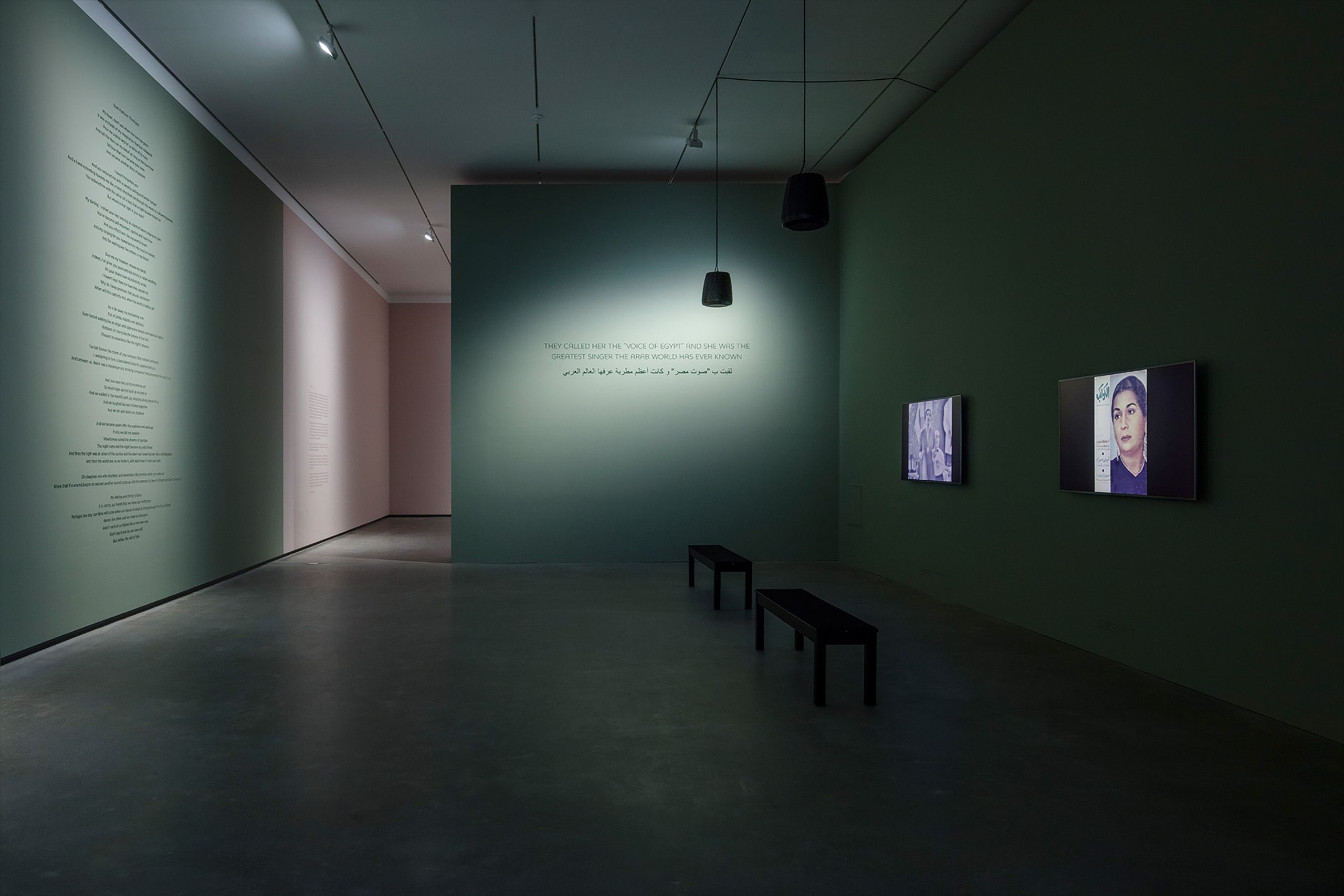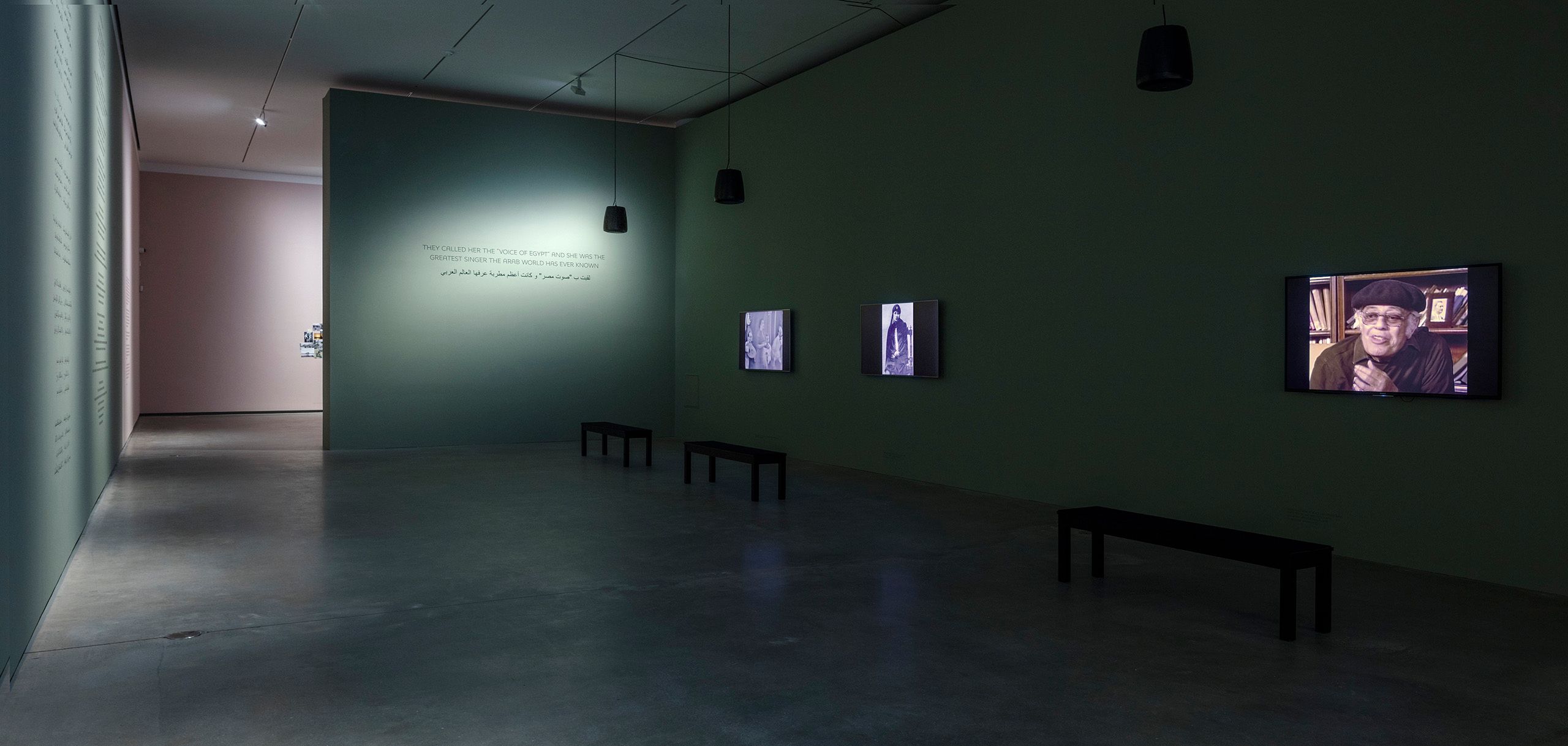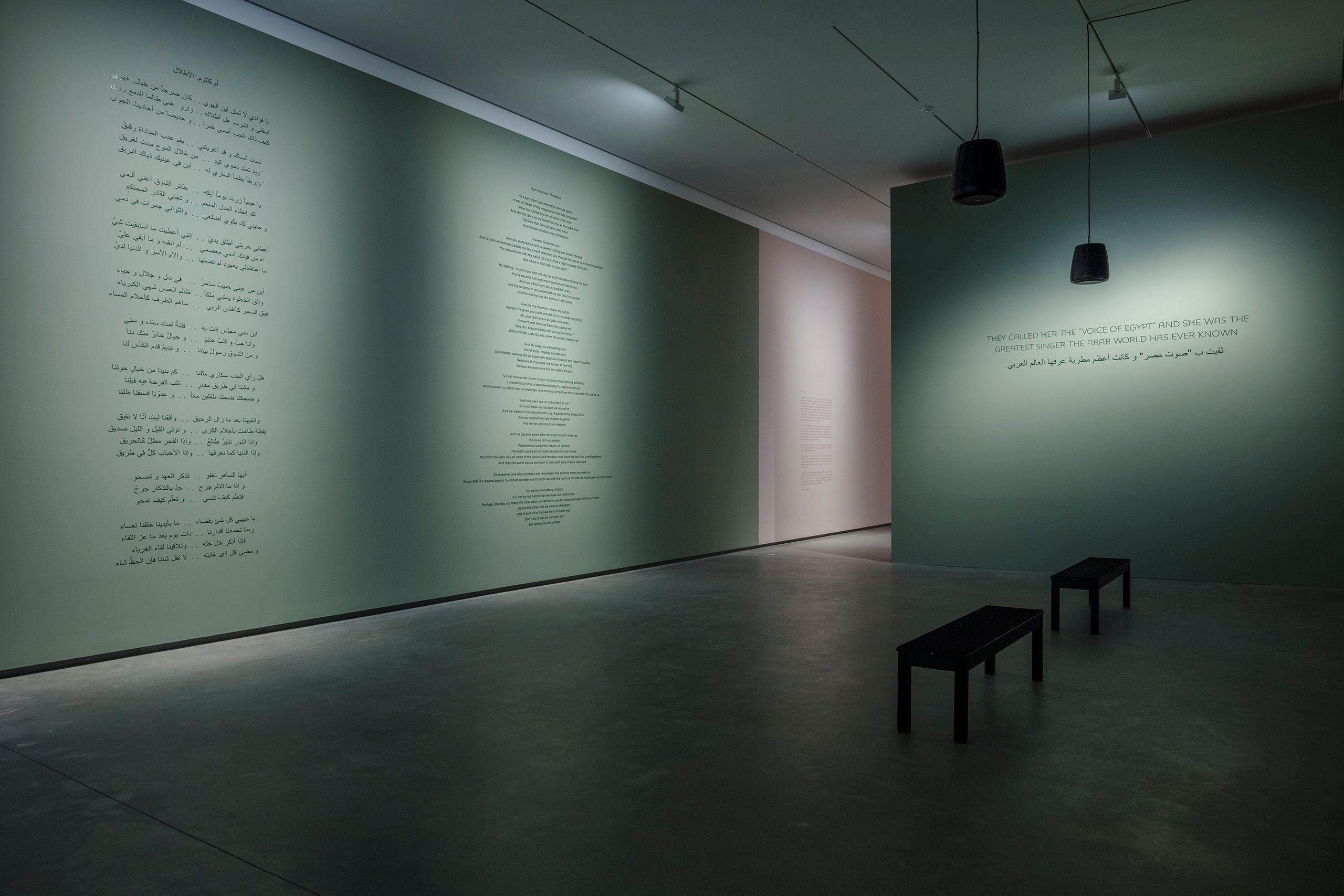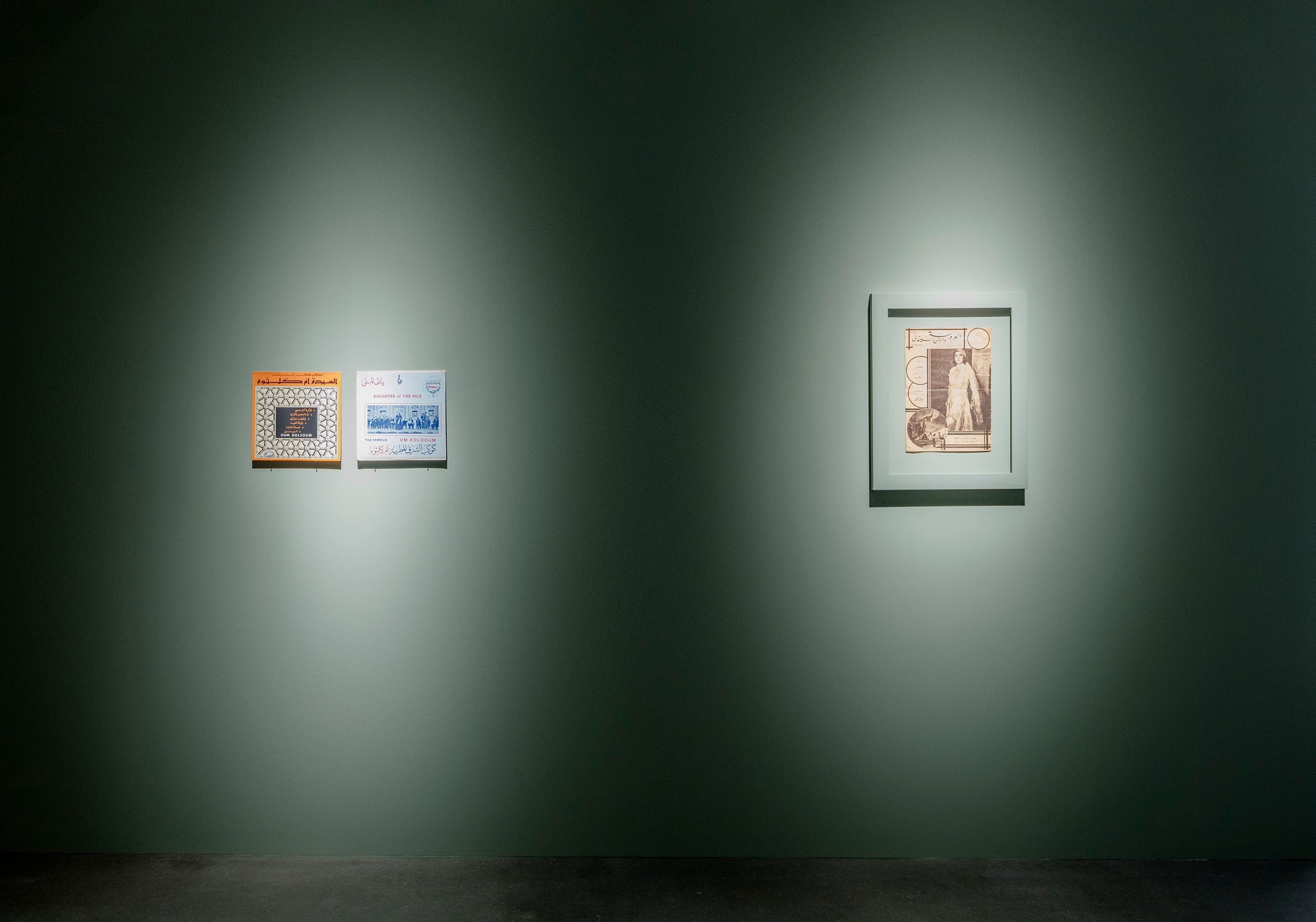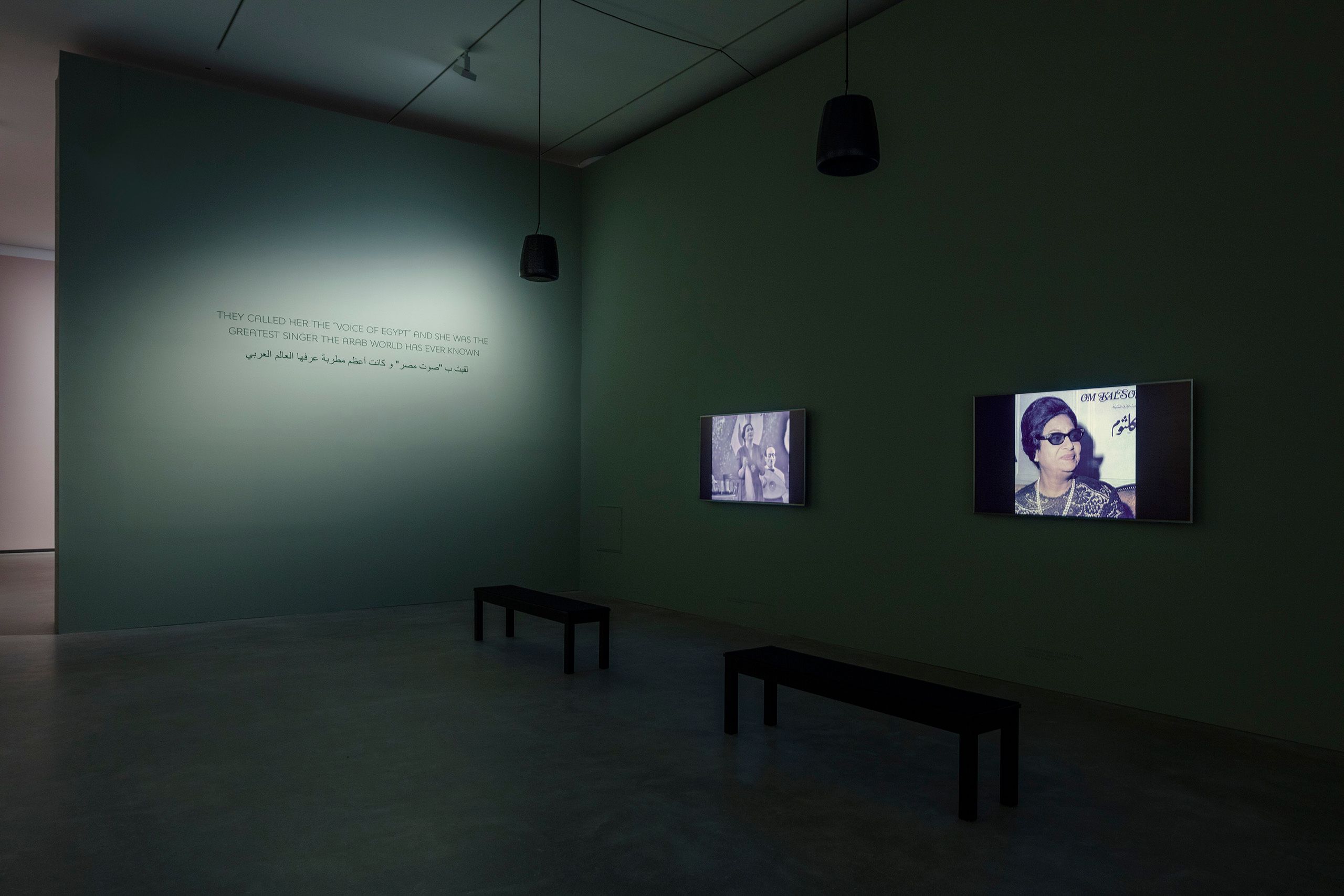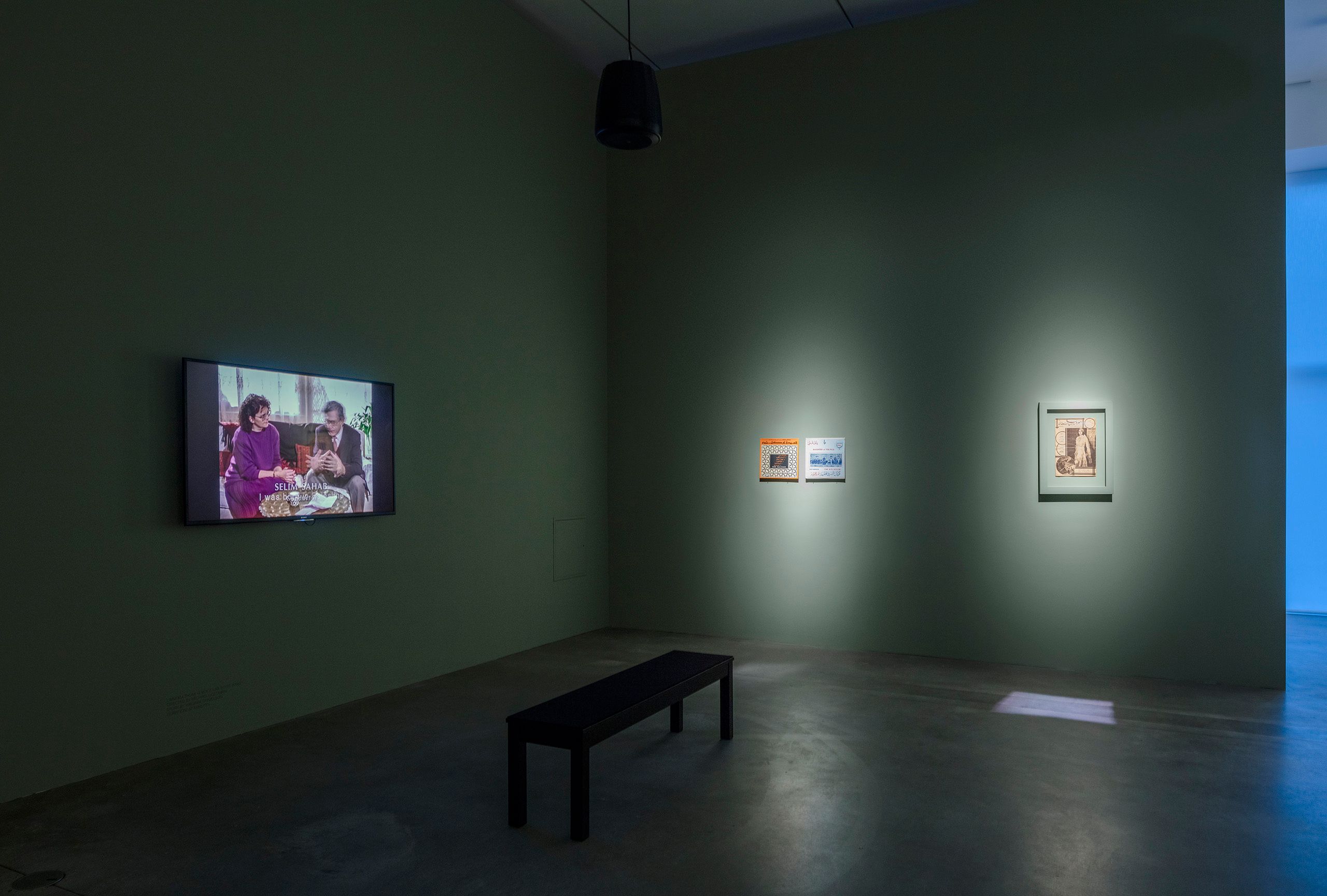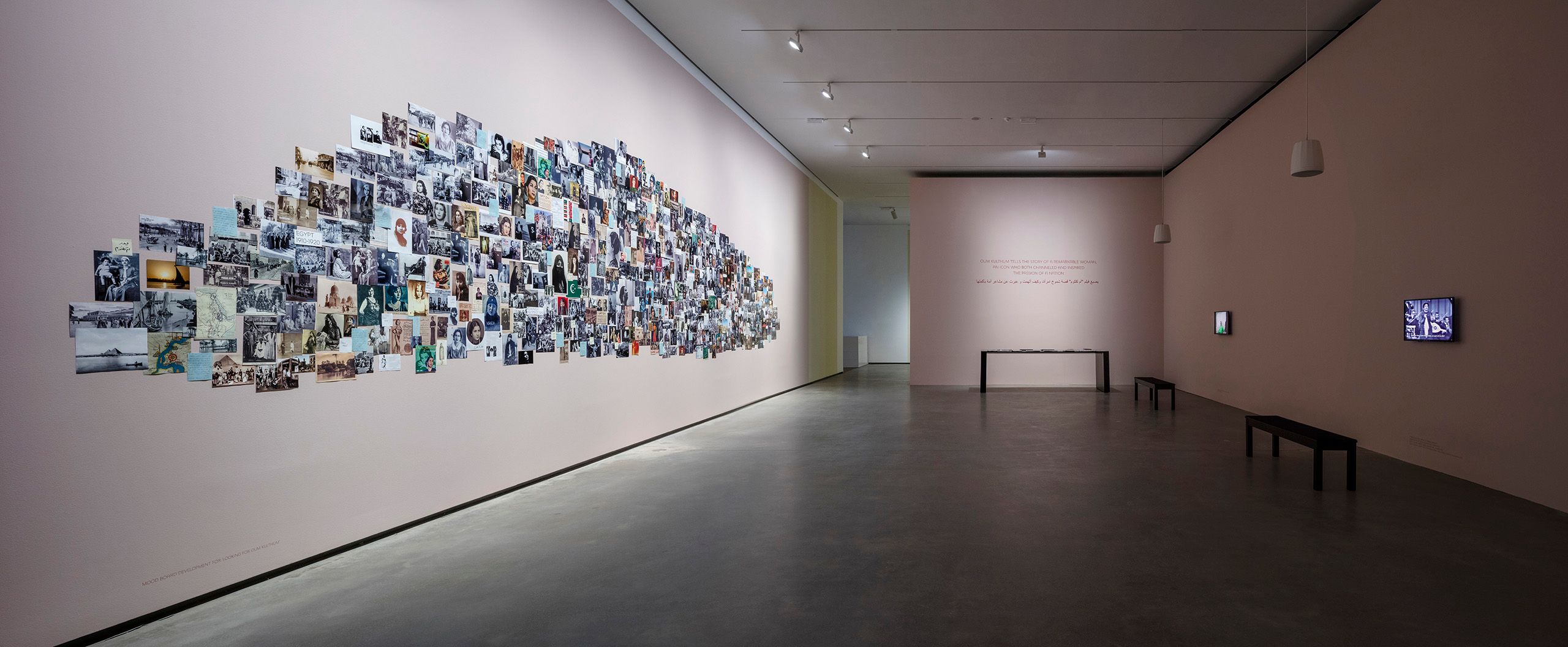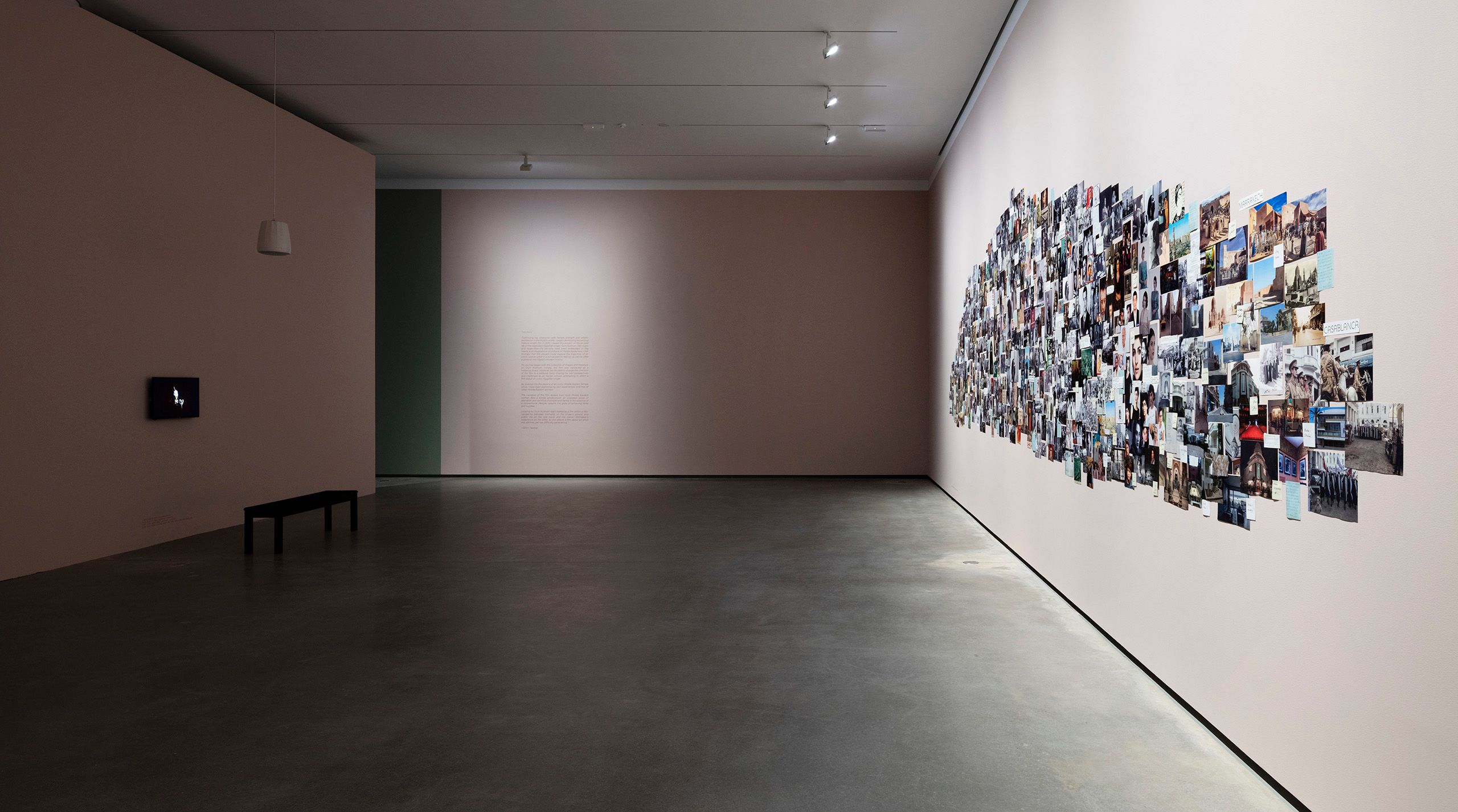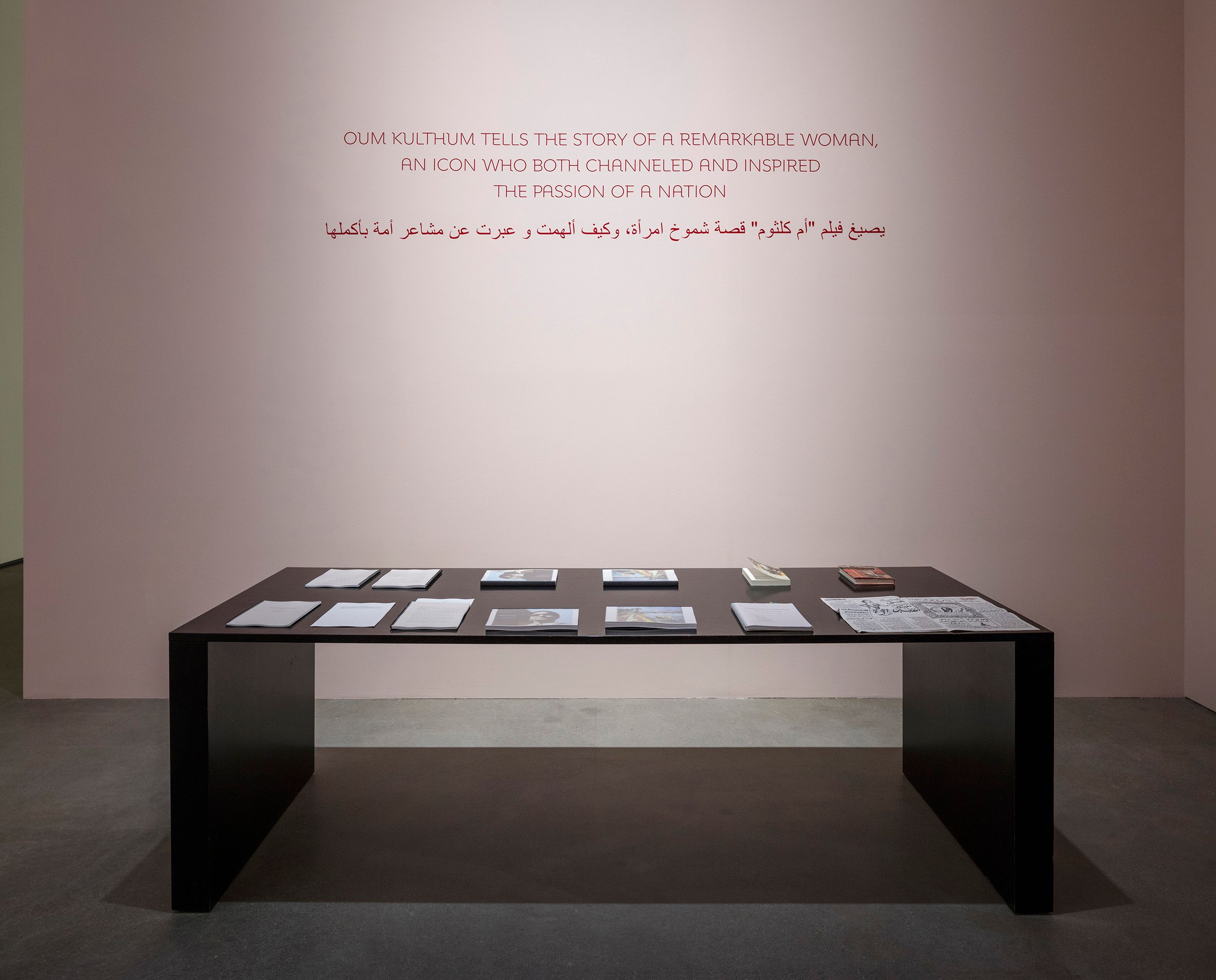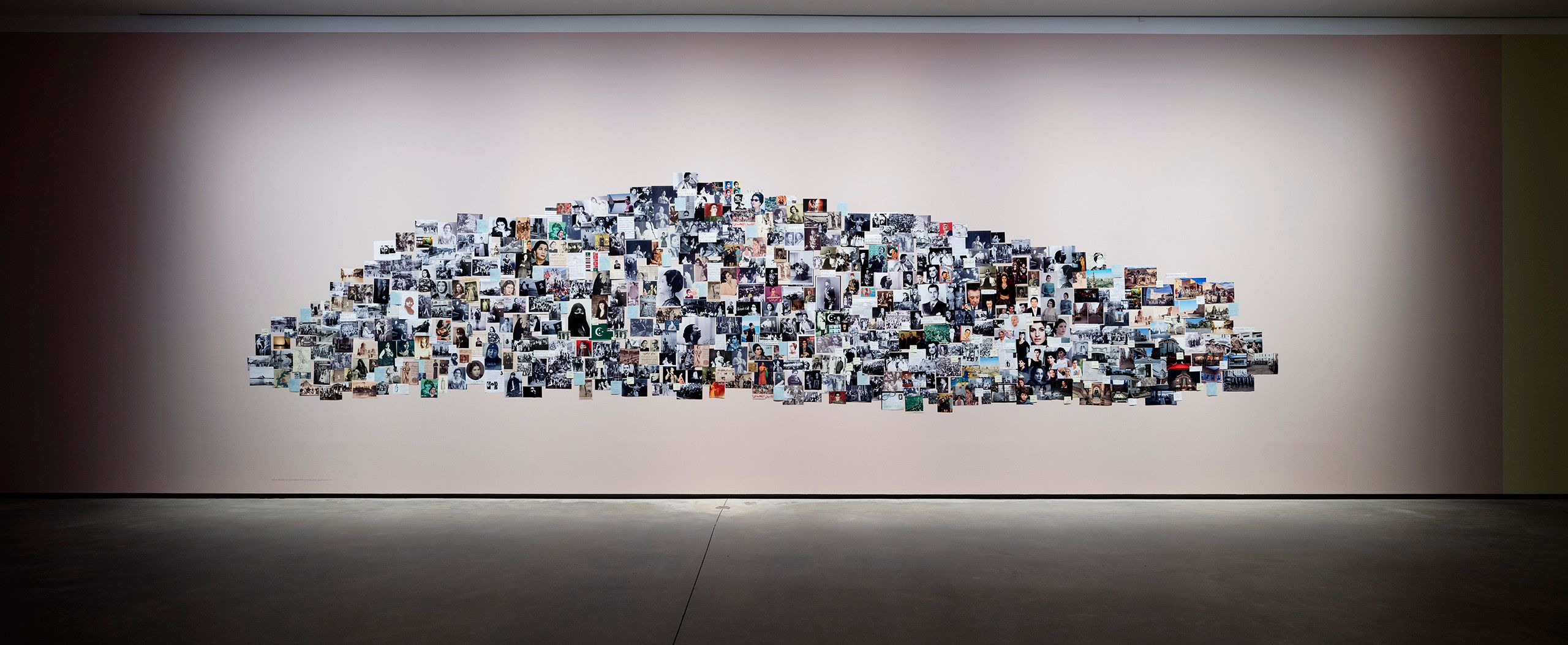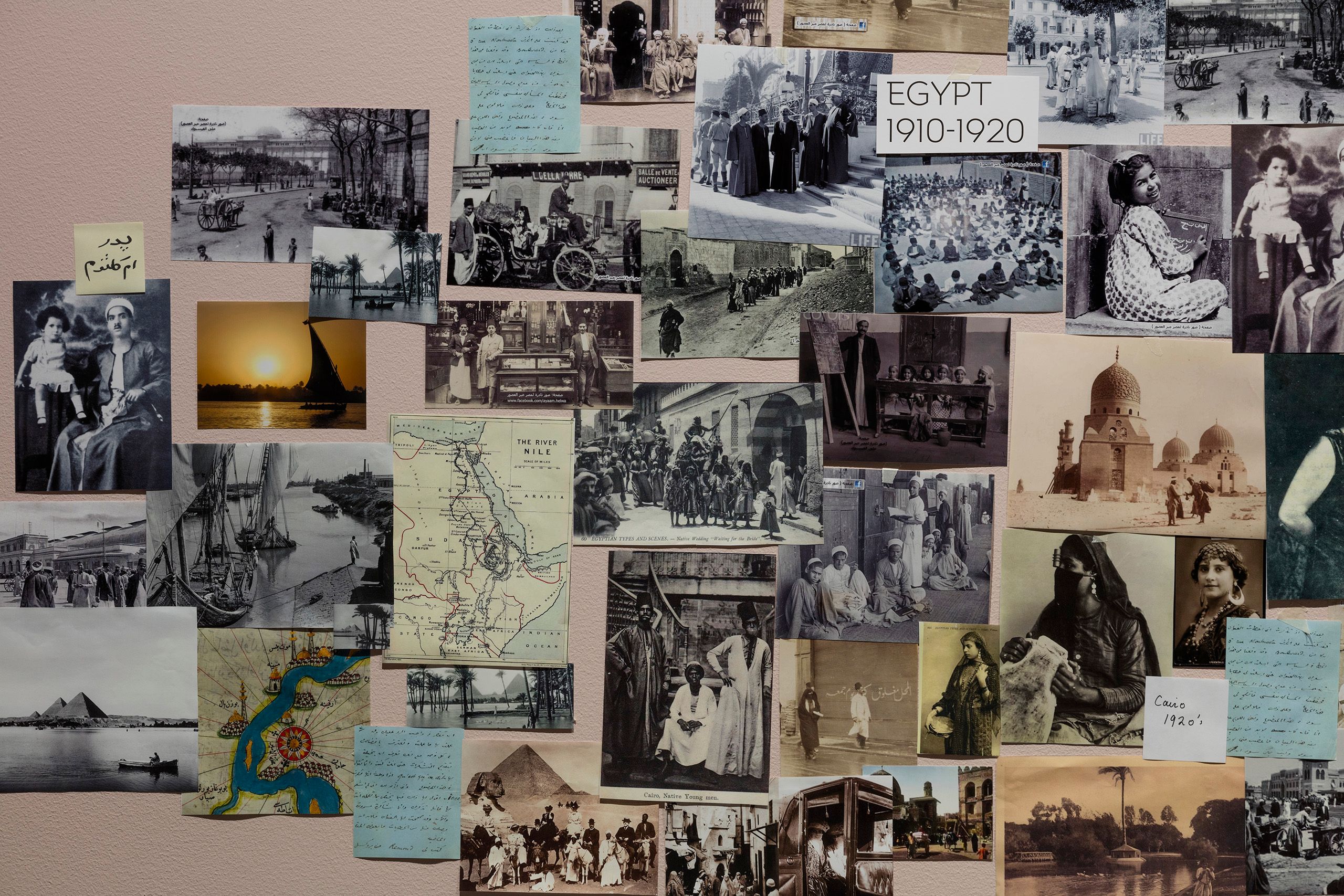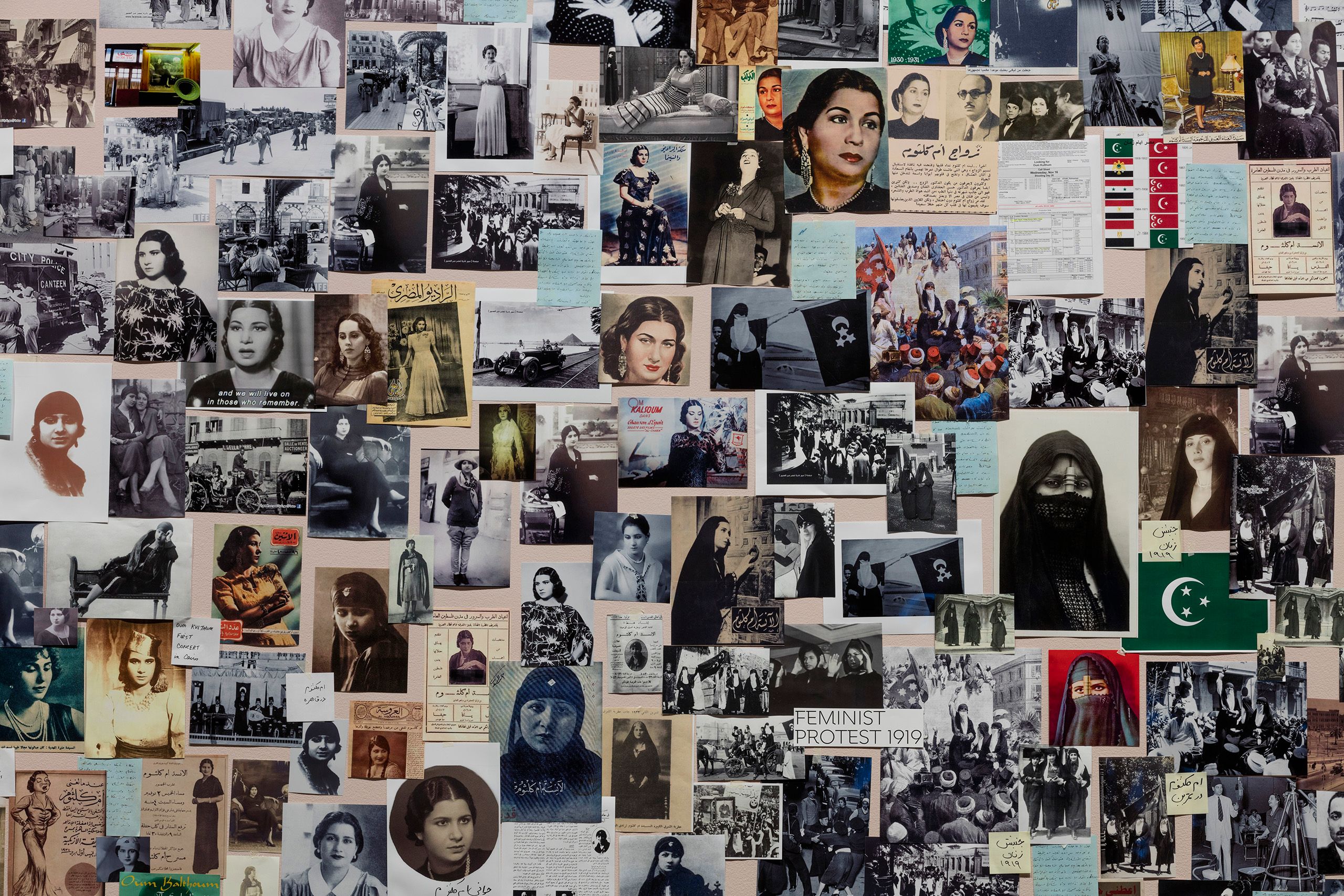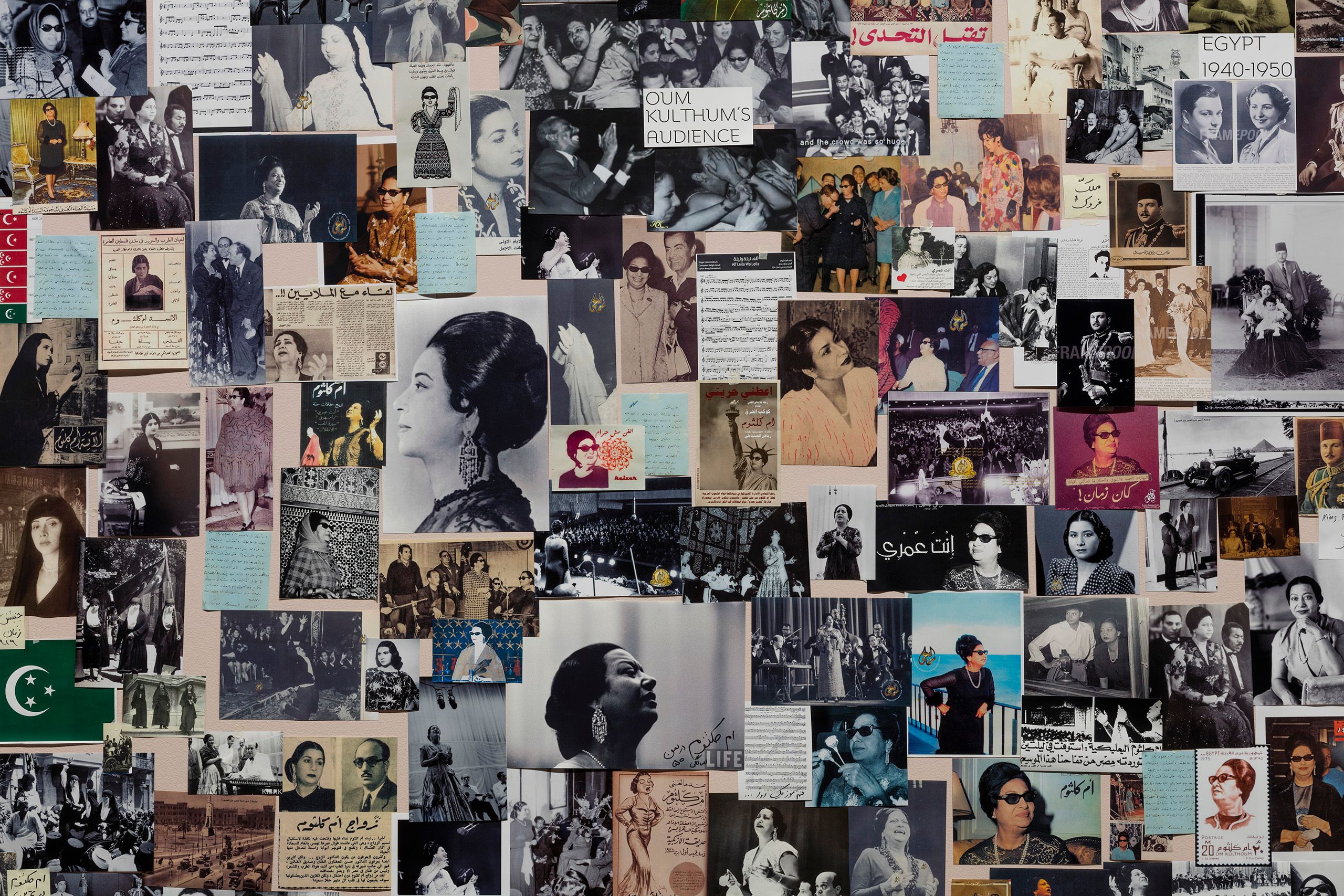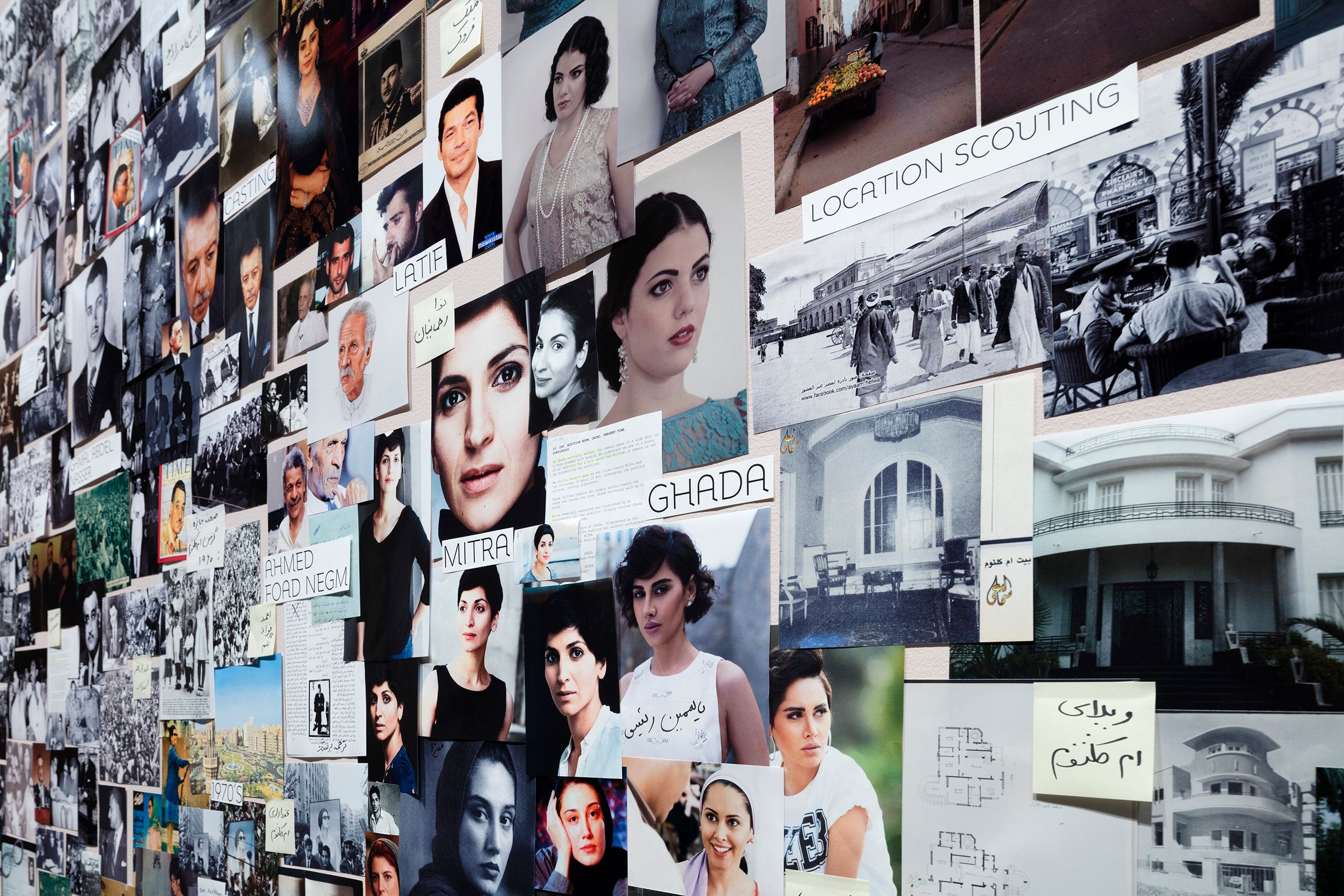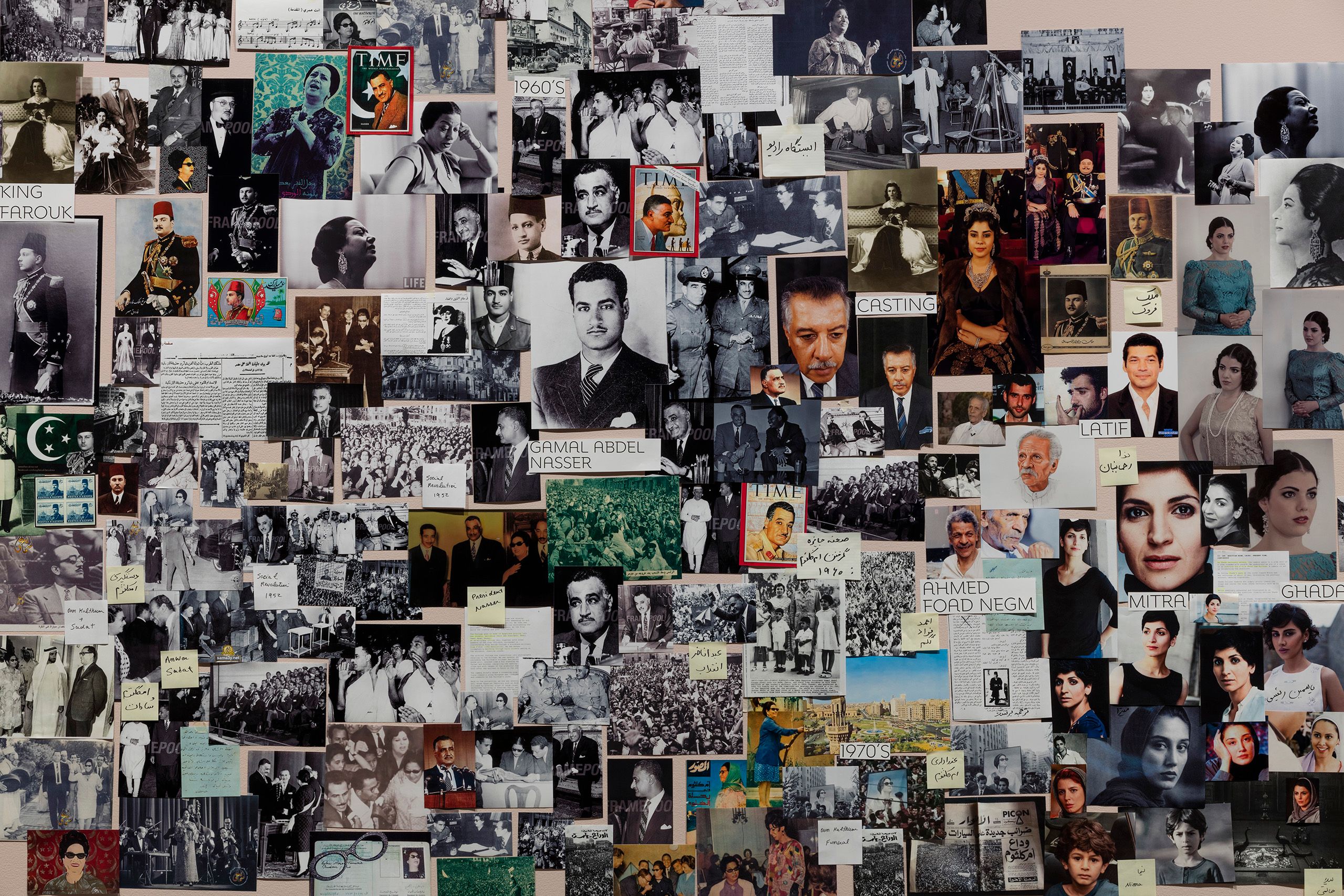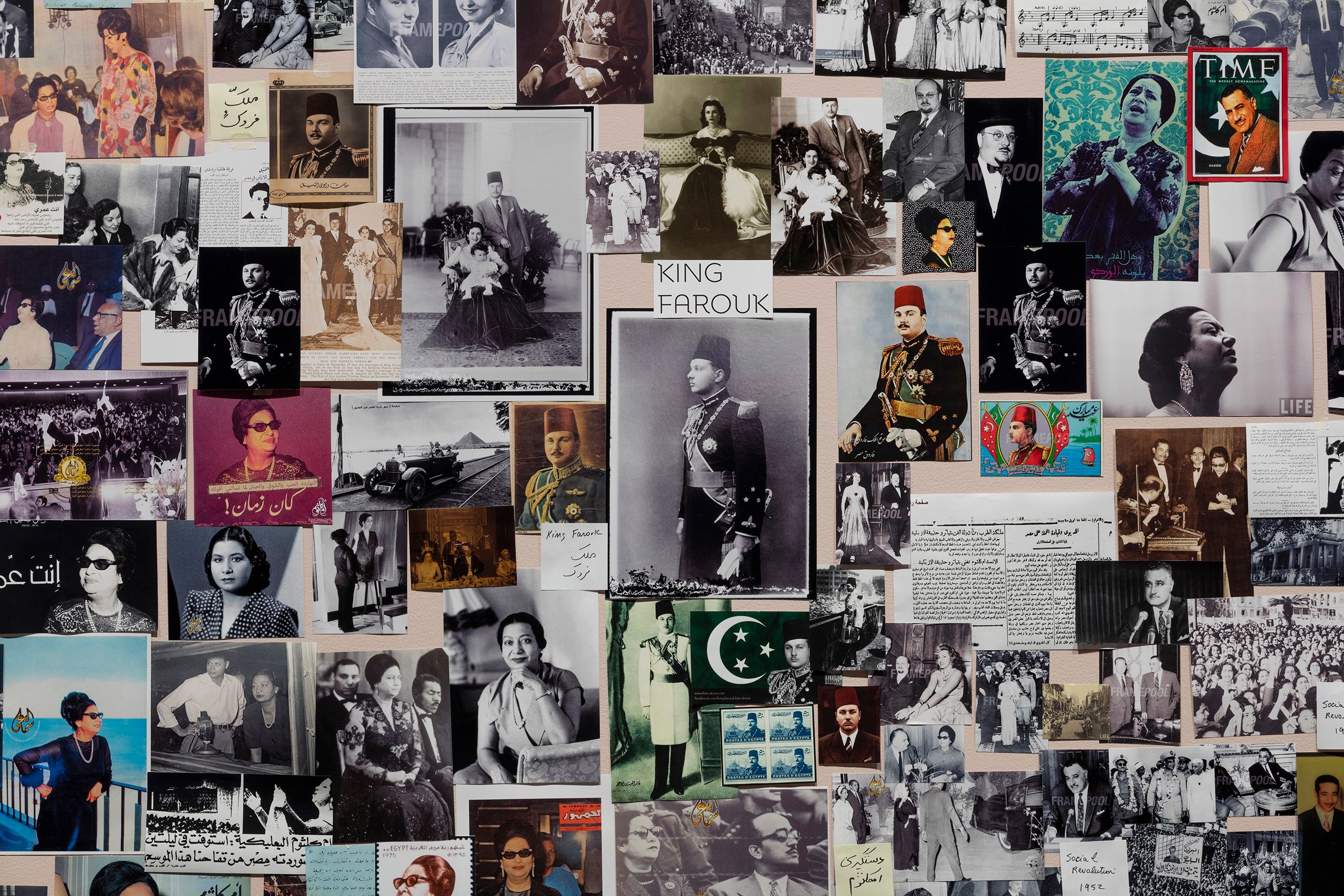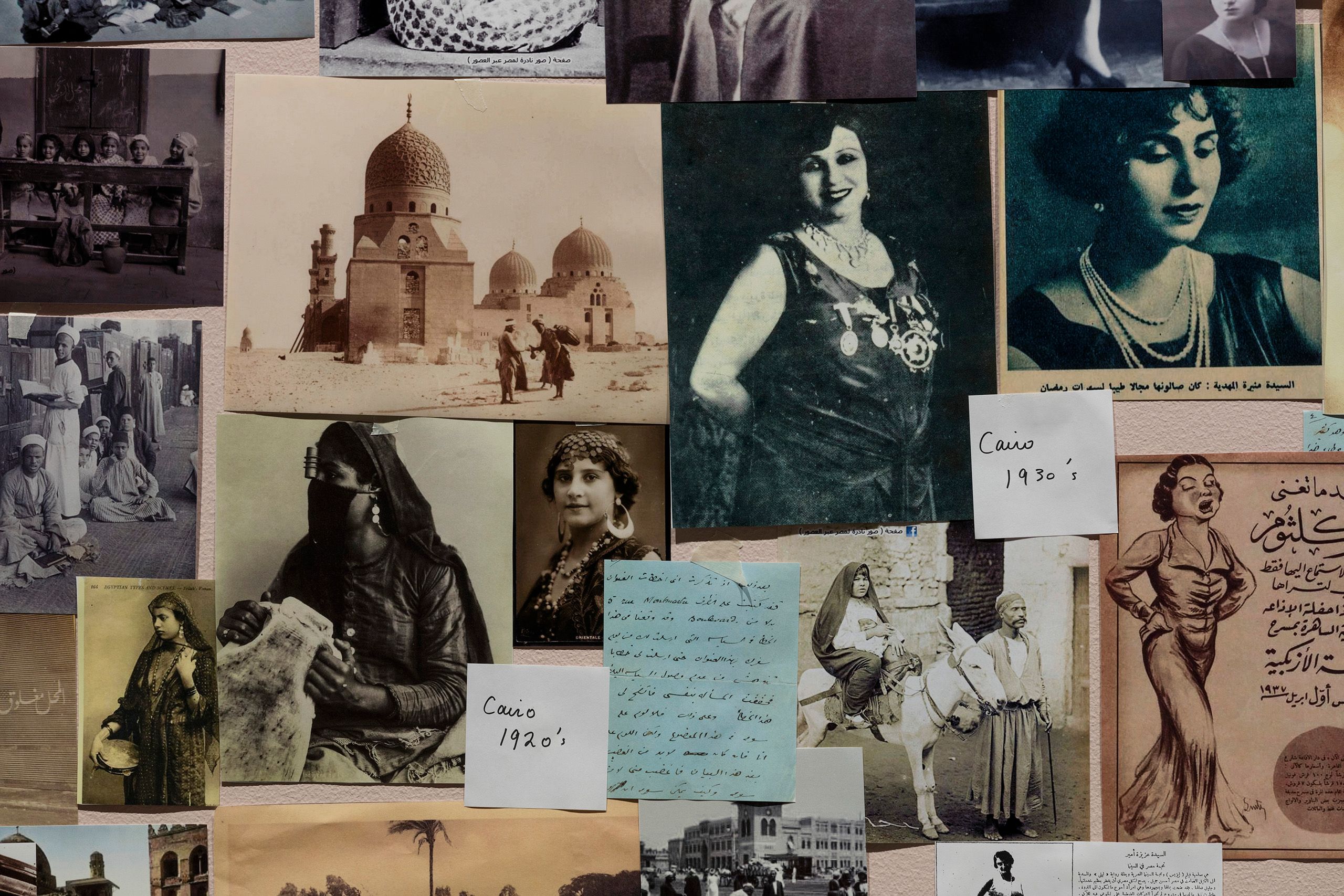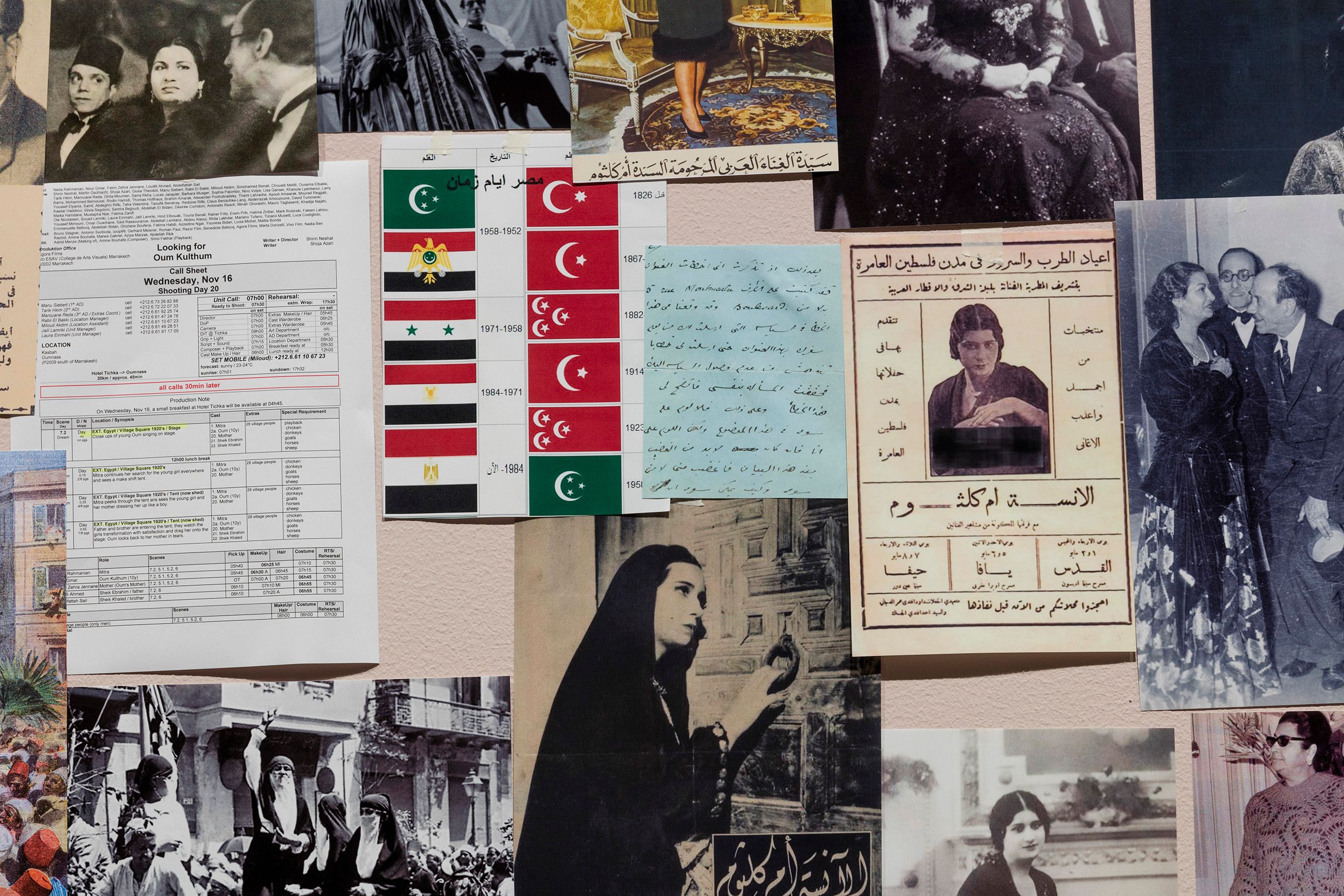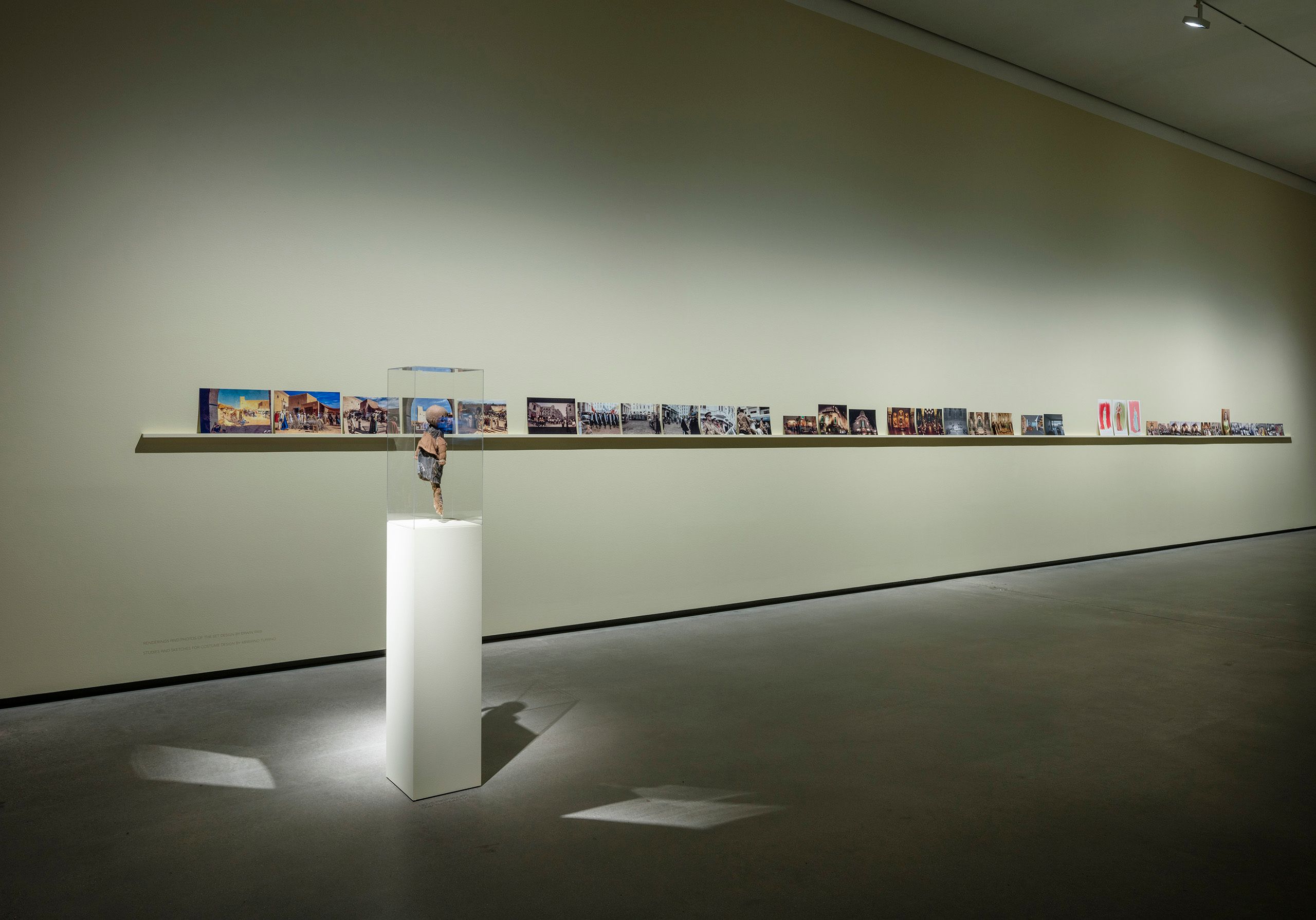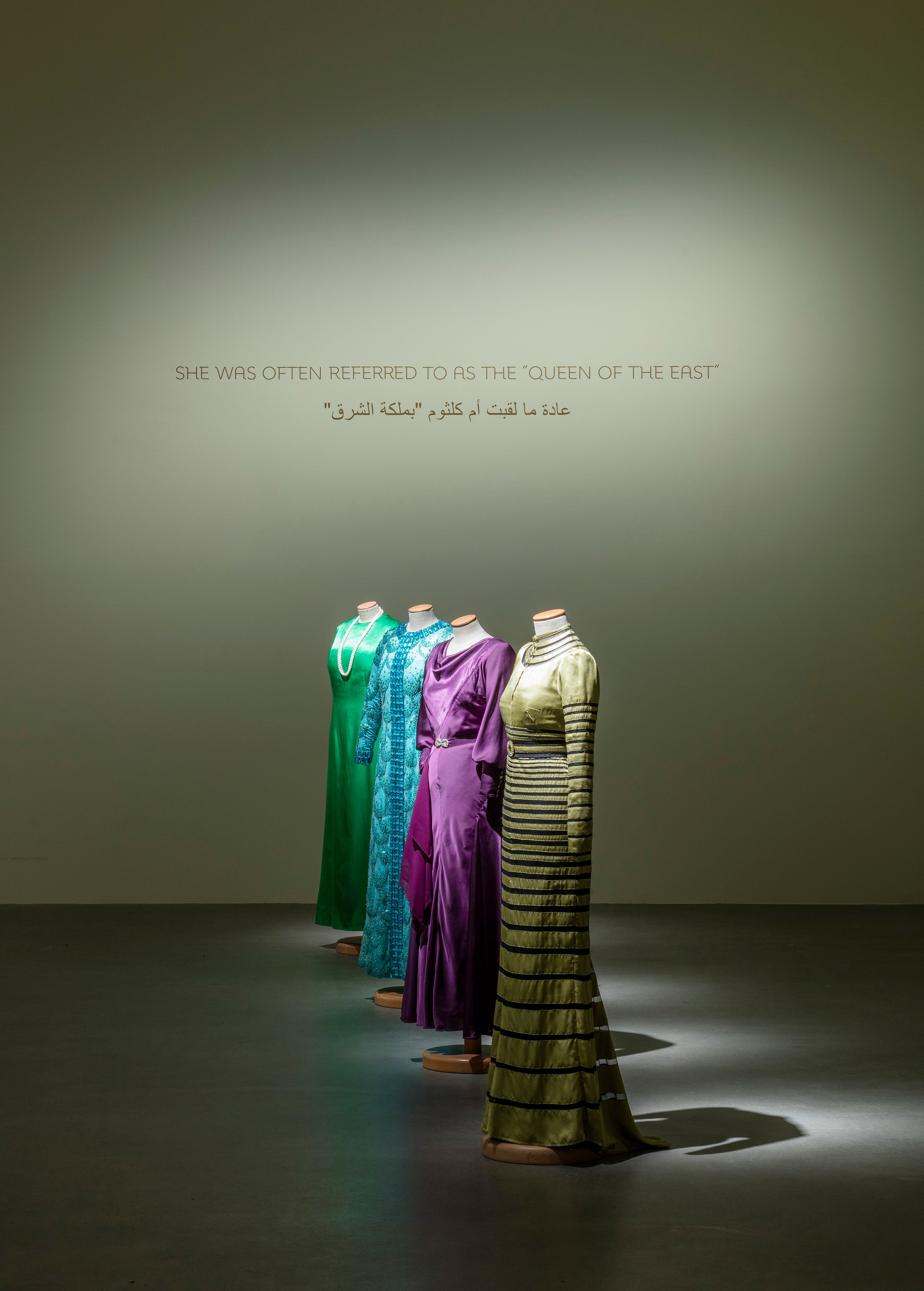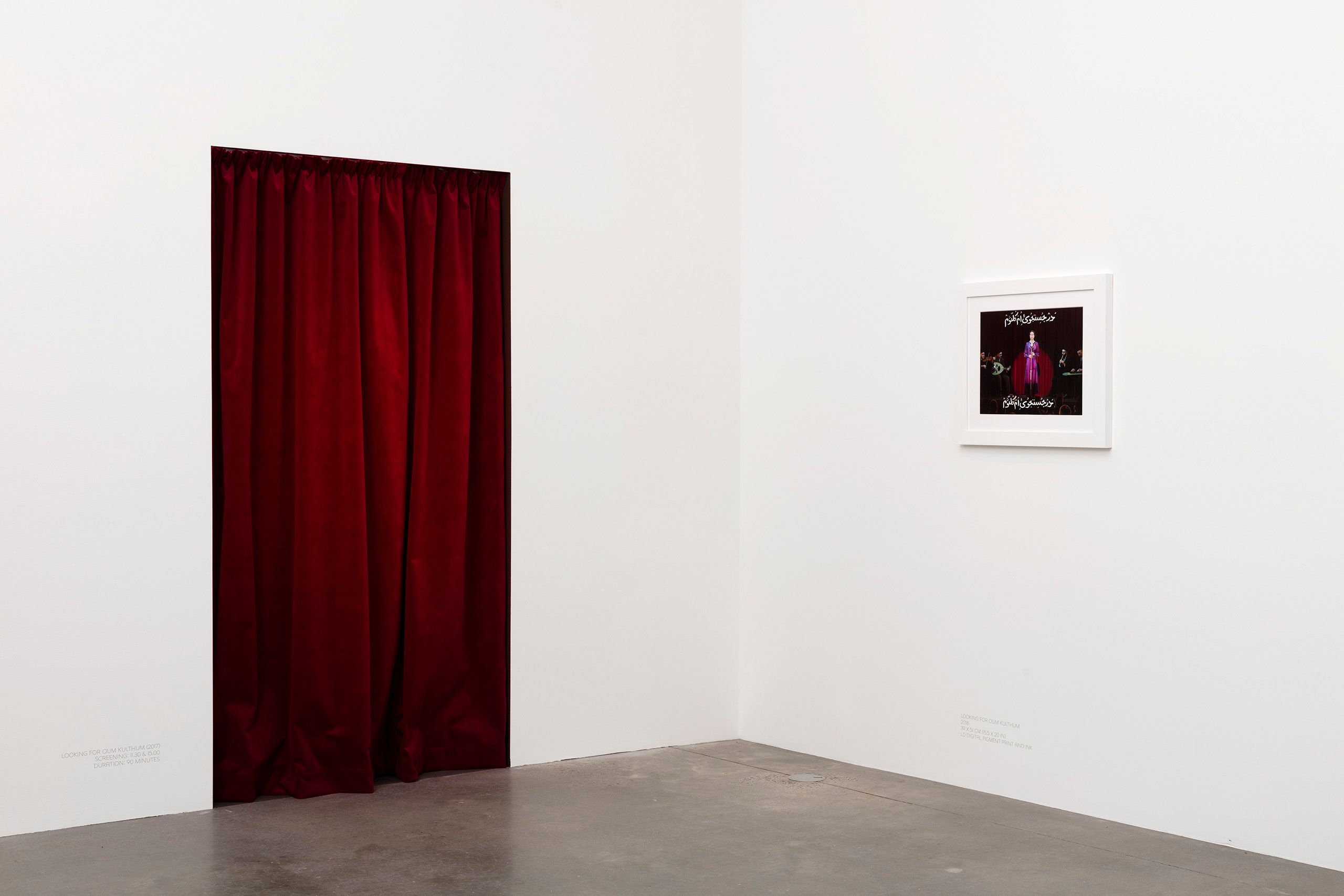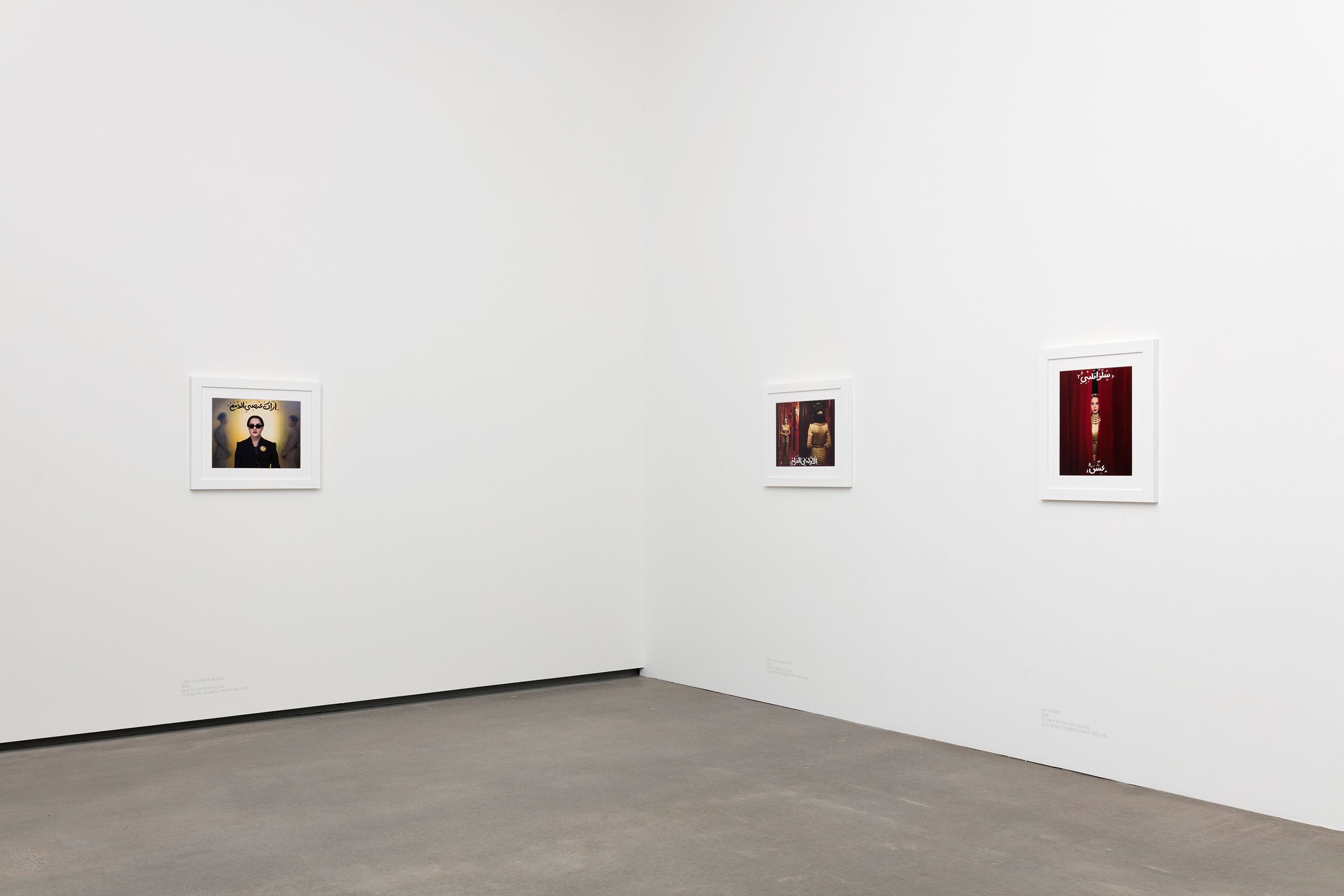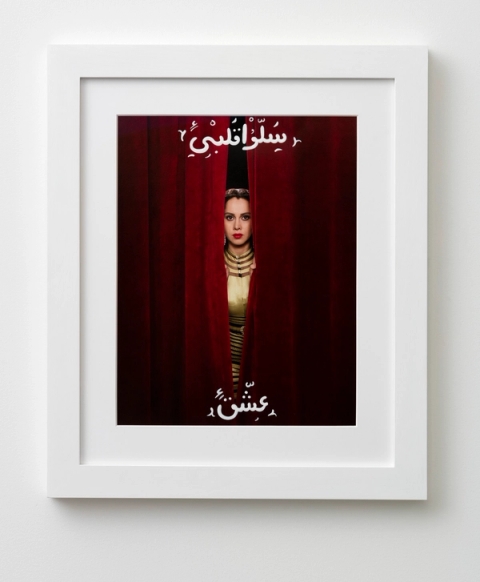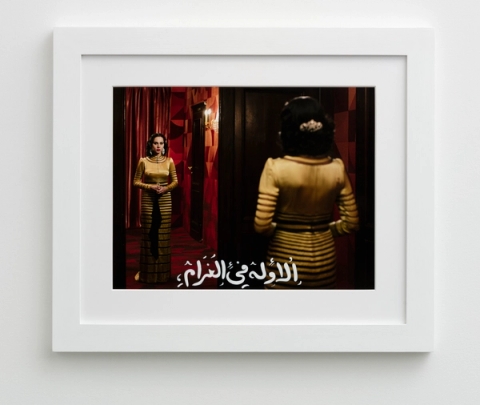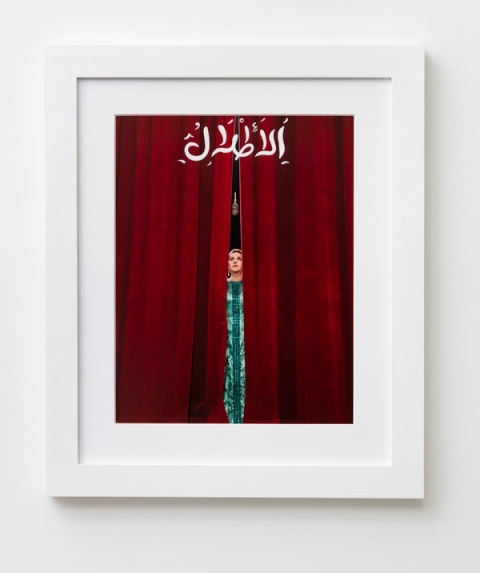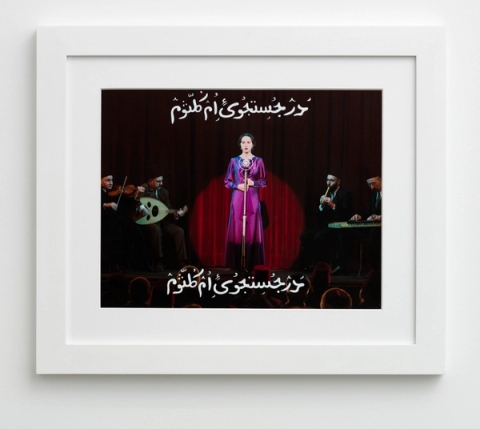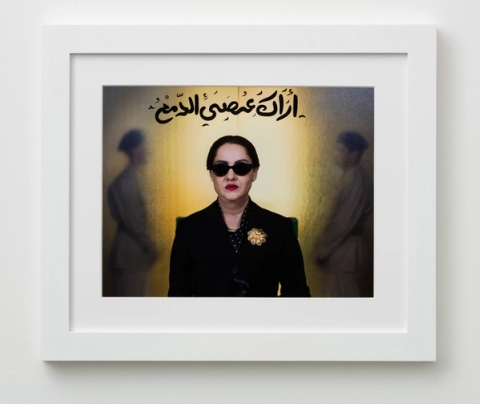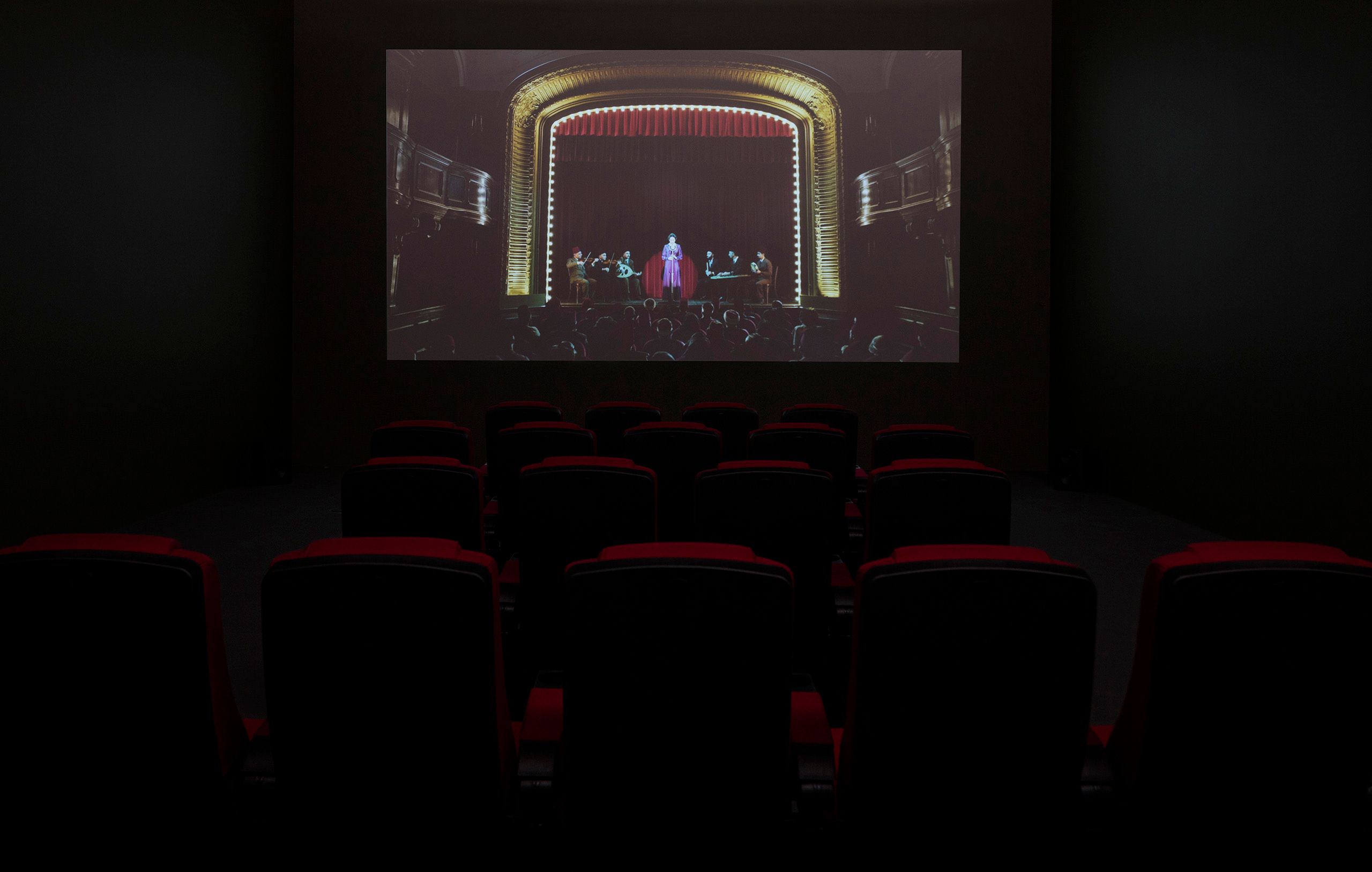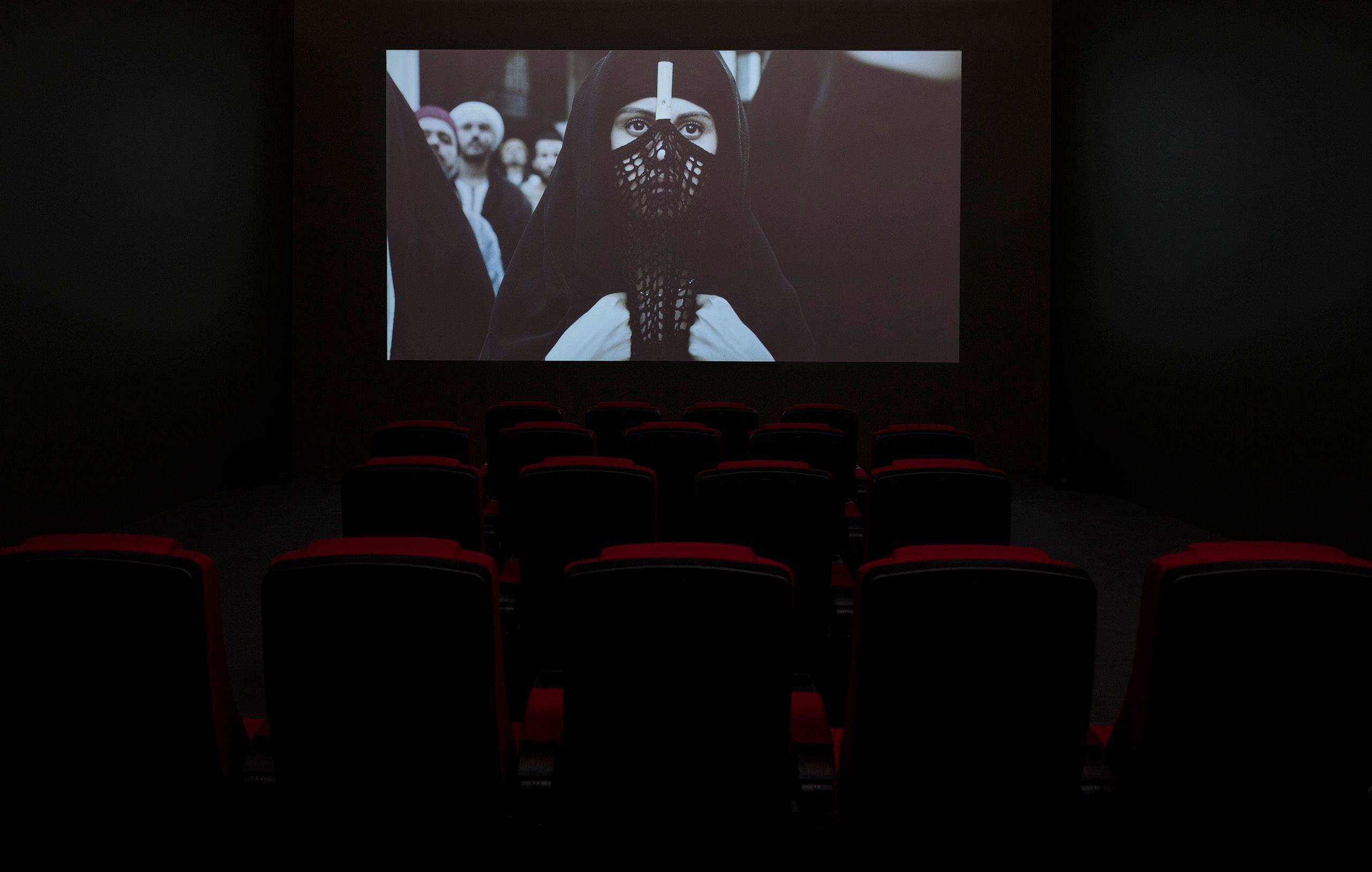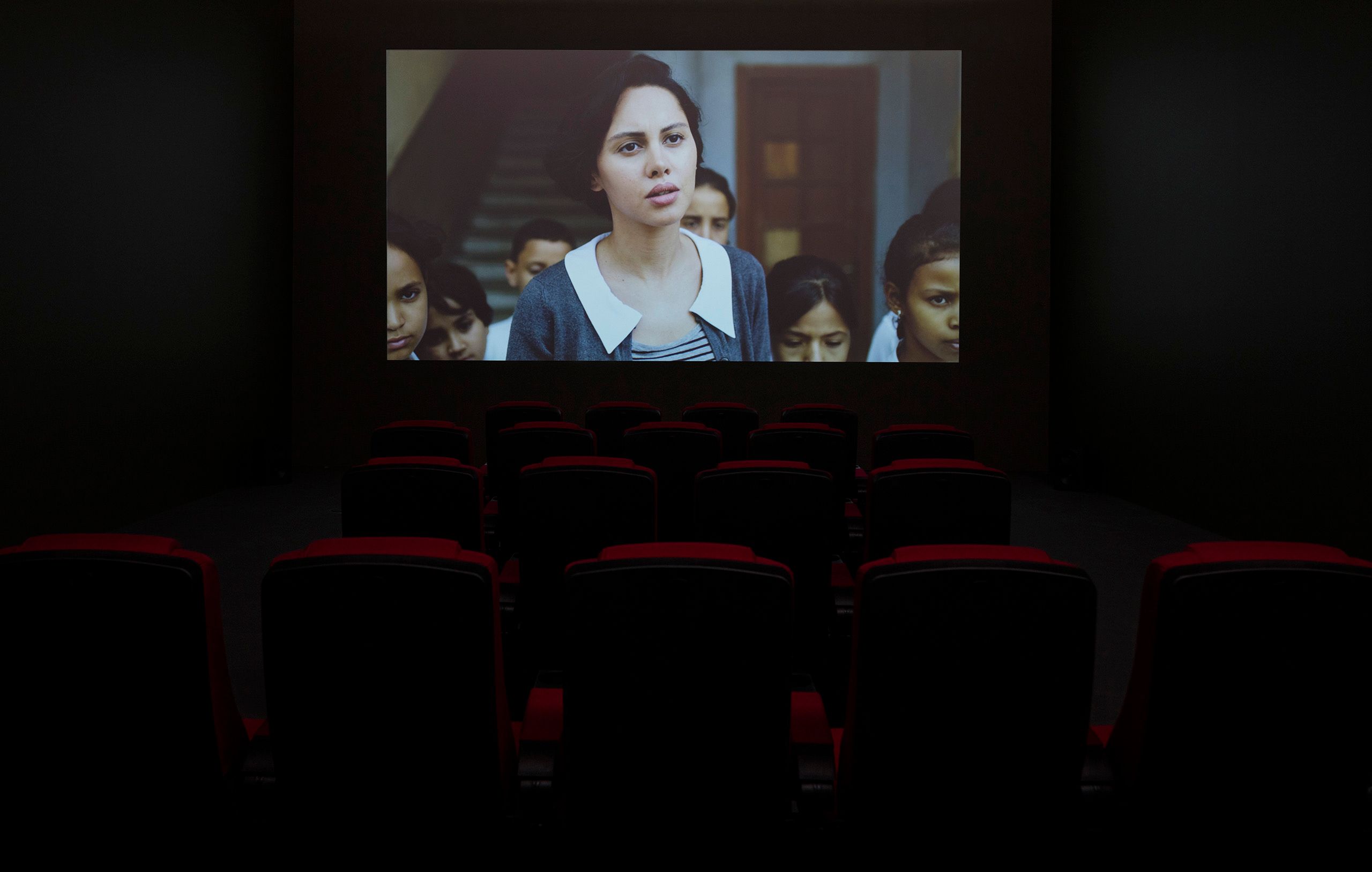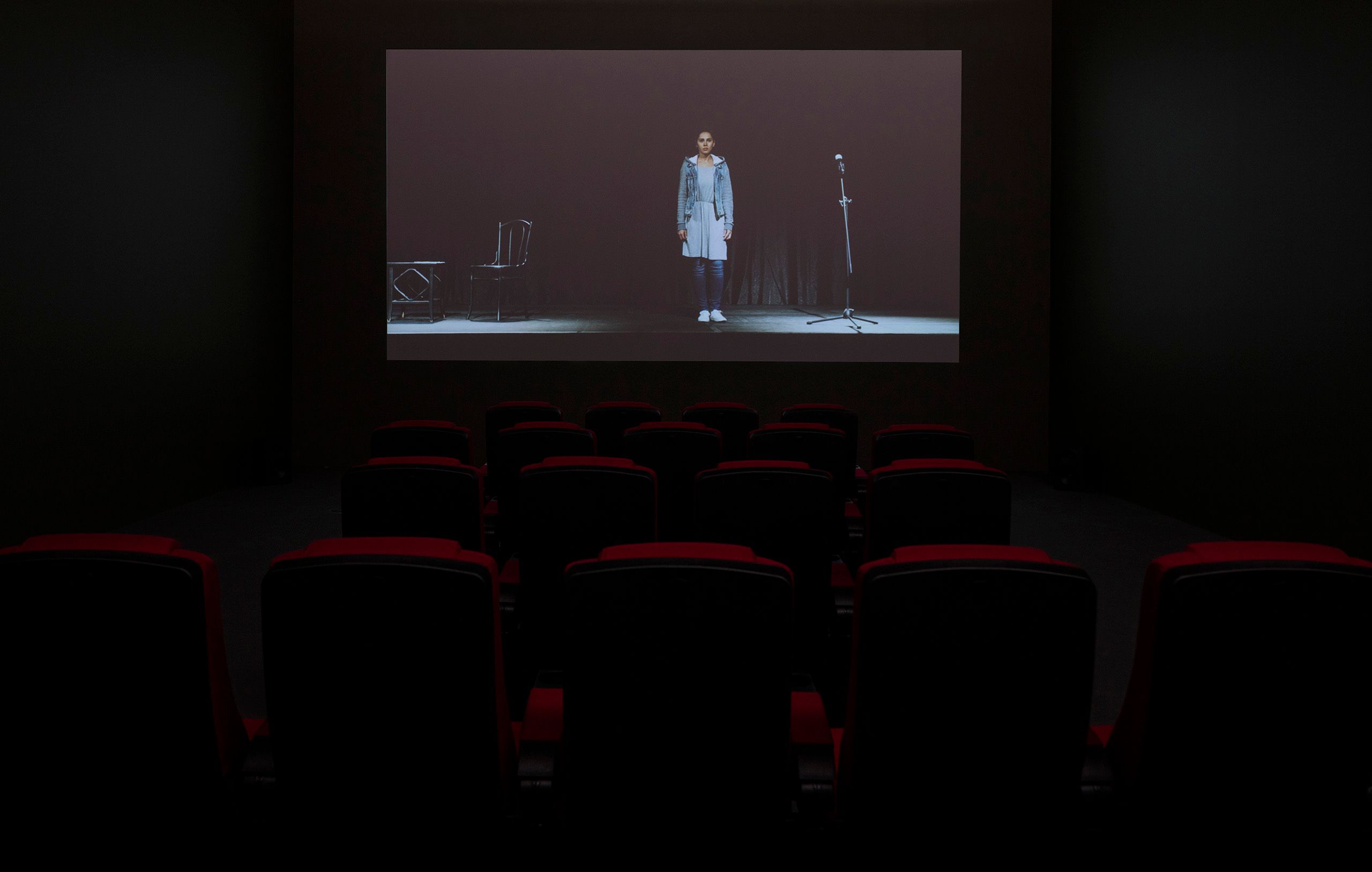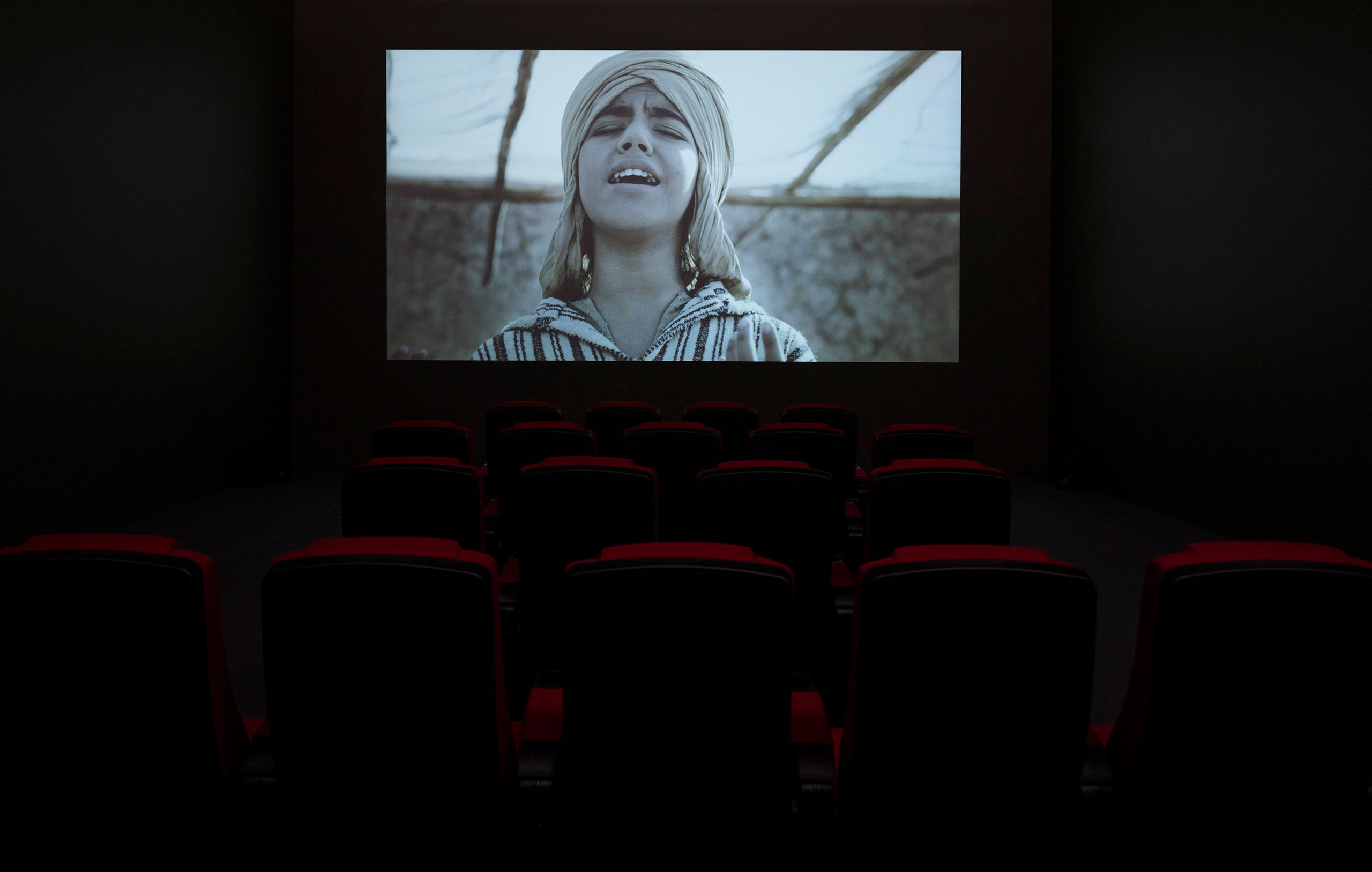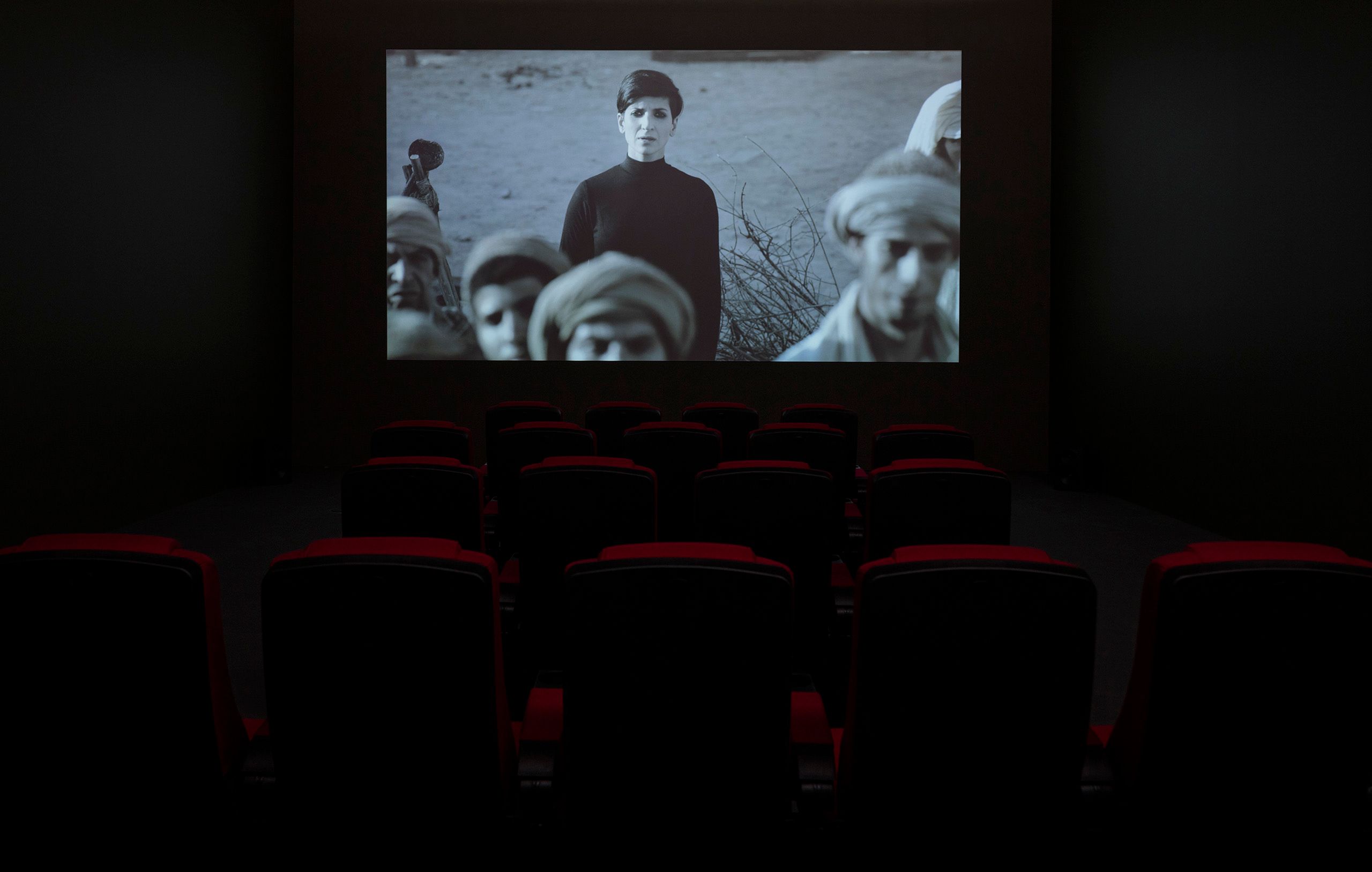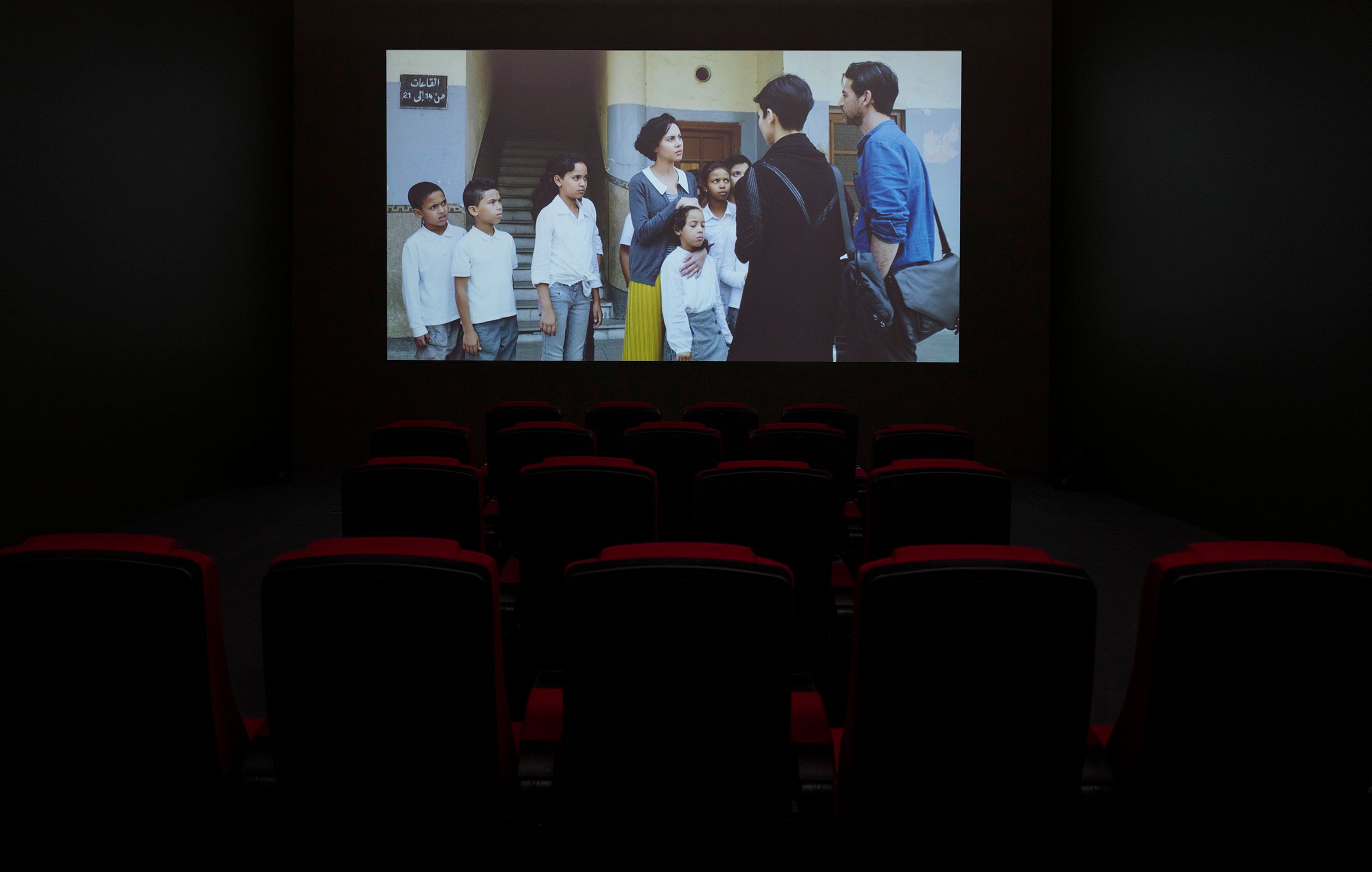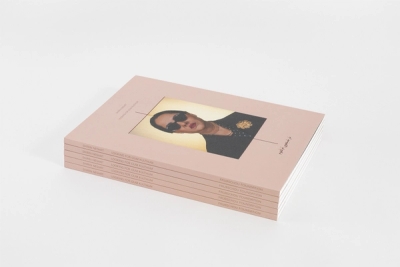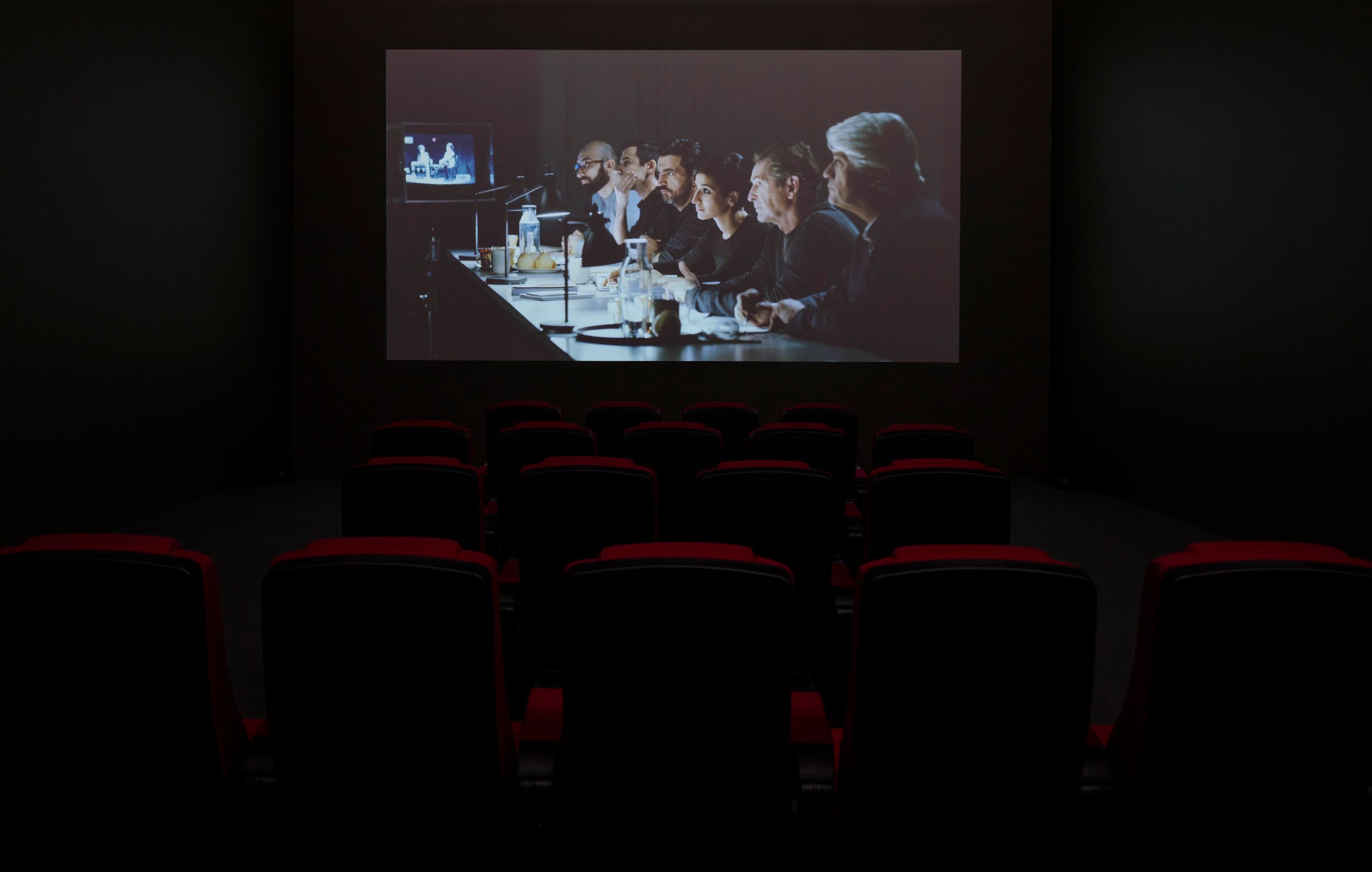
As a “film within a film,” Neshat’s Looking for Oum Kulthum renders the journey of an Iranian woman, who is making a film about the most famous singer of the Arab world; the Egyptian singer, Oum Kulthum, often referred to as “the Queen of the Arabs,” due to her capability of culturally uniting a diverse group of nations.
“Looking for Oum Kulthum is the plight of an Iranian woman artist/filmmaker living in exile, as she embarks on capturing the life and art of the legendry female singer of the Arab world, Oum Kulthum.”
Shirin Neshat
The film was first presented in Venice at the Giornate degli Autori film festival in 2017. Now, for the first time,the exhibition, Shirin Neshat I Looking for Oum Kulthum, invites visitors to look behind the scenes of the 6-year-long film production. The exhibition consists of extensive, historical research on who Oum Kulthum was, including her history, career and personal life. It also explores the reasons behind the singer’s legendary fame throughout the entire Arab world. Faurschou Foundation is pleased to give insight into the development and production of the film, enabling a better understanding of the complexity behind its creation.
Shirin Neshat Bio
Born in Qazvin, Iran, in 1957, Shirin Neshat moved to the United States in 1974, where she studied art. The historic rupture of the 1979 Islamic Revolution in Iran changed her life and creative practice. She gained international prominence in 1995 with her iconic series of black and white, calligraphy-overlaid photographs, Women of Allah. She broke new ground, winning the Golden Lion award at the Venice Biennale (1999), for her video installation, Turbulent, and the Silver Lion at the International Venice Film Festival (2009) for directing her first feature film, Women Without Men. Solo exhibitions include shows at the Museo de Arte Moderno, Mexico City; Contemporary Arts Museum, Houston; Walker Art Center, Minneapolis; Castello di Rivoli, Turin; the Art Institute of Chicago; and the Serpentine Gallery, London. Neshat has participated in the New Orleans Biennial (2008), Documenta XI, Whitney Biennial (2000), and the Venice Biennale (1999). She lives and works in New York City.
Shirin Neshat works with subjects that raise issues of gender, identity and politics in Muslim countries through photography, film installations and feature films. This wide range of media, used in each of Neshat’s works, powerfully reflects the broad spectrum, in which female voices and visions seek to be heard and seen in a male dominated society.
Group Exhibition
Virtual Reality Art
